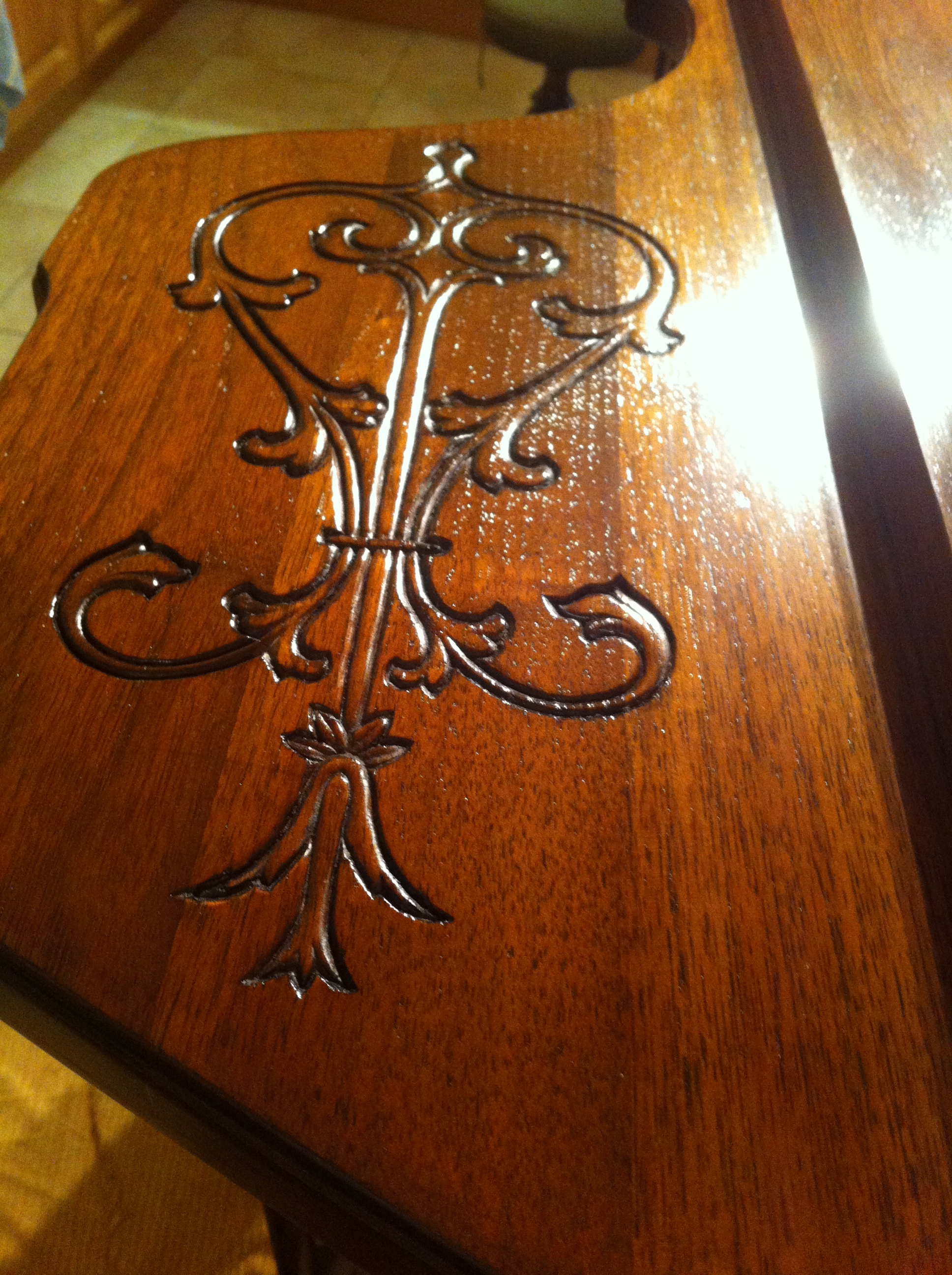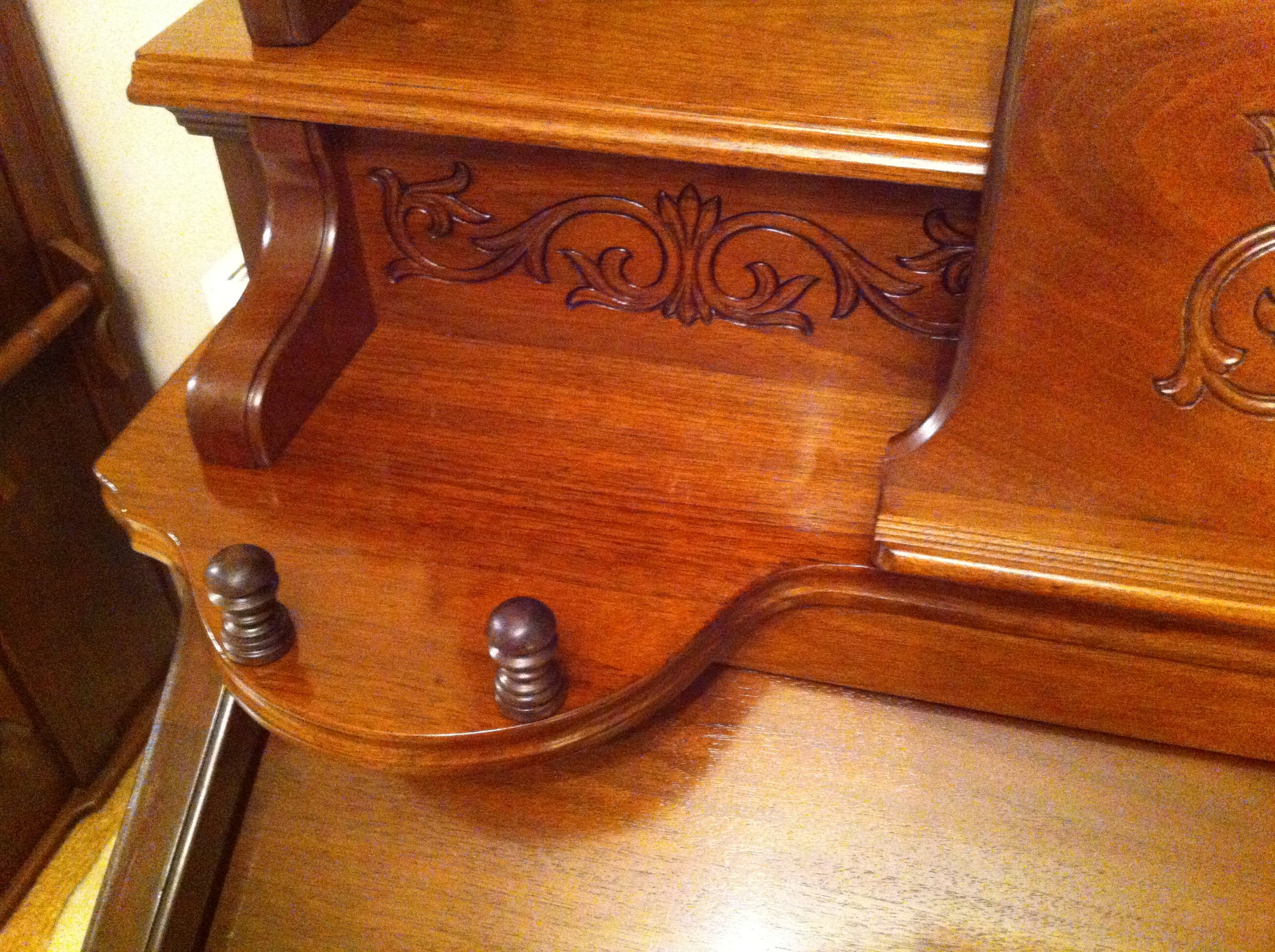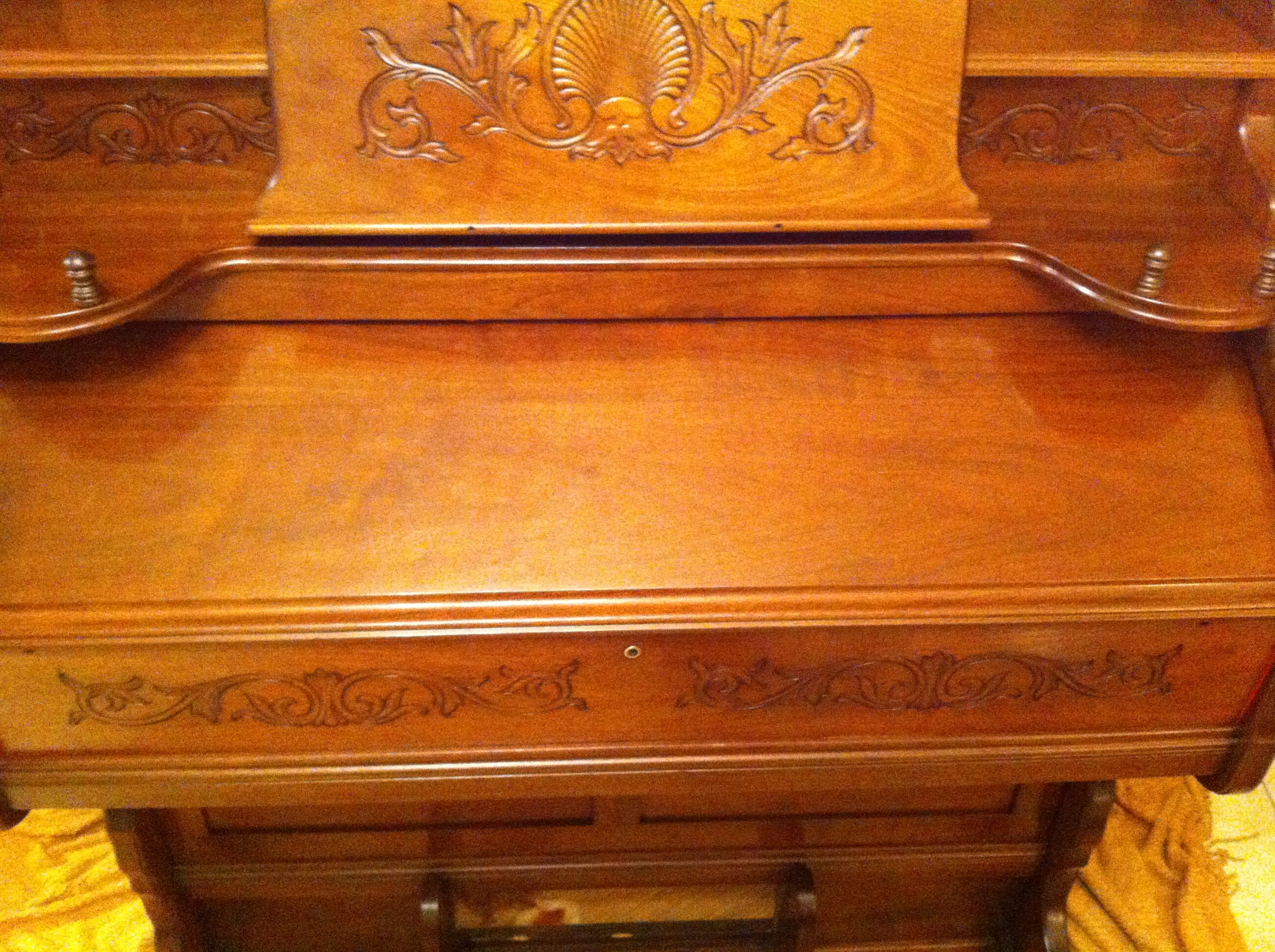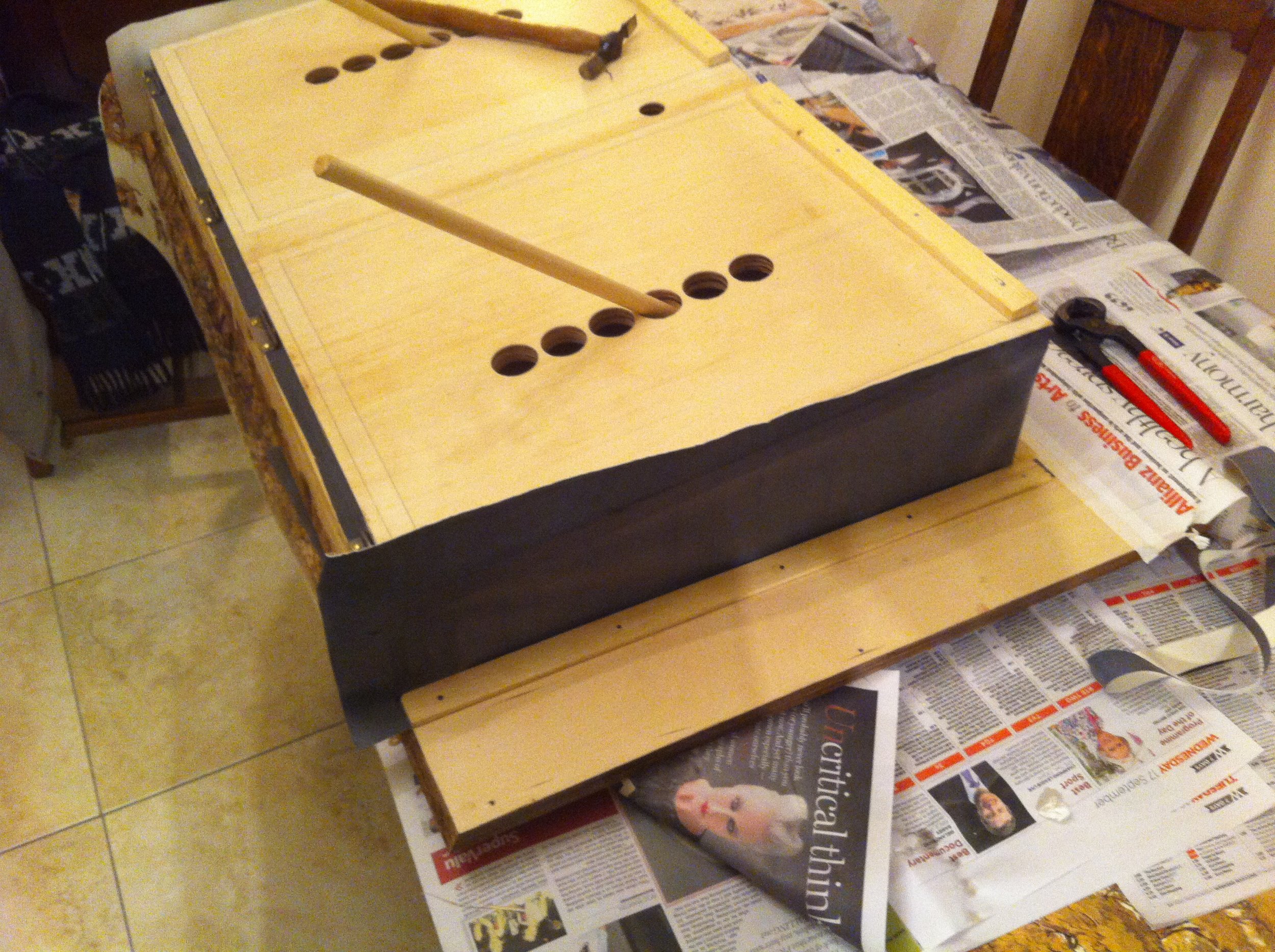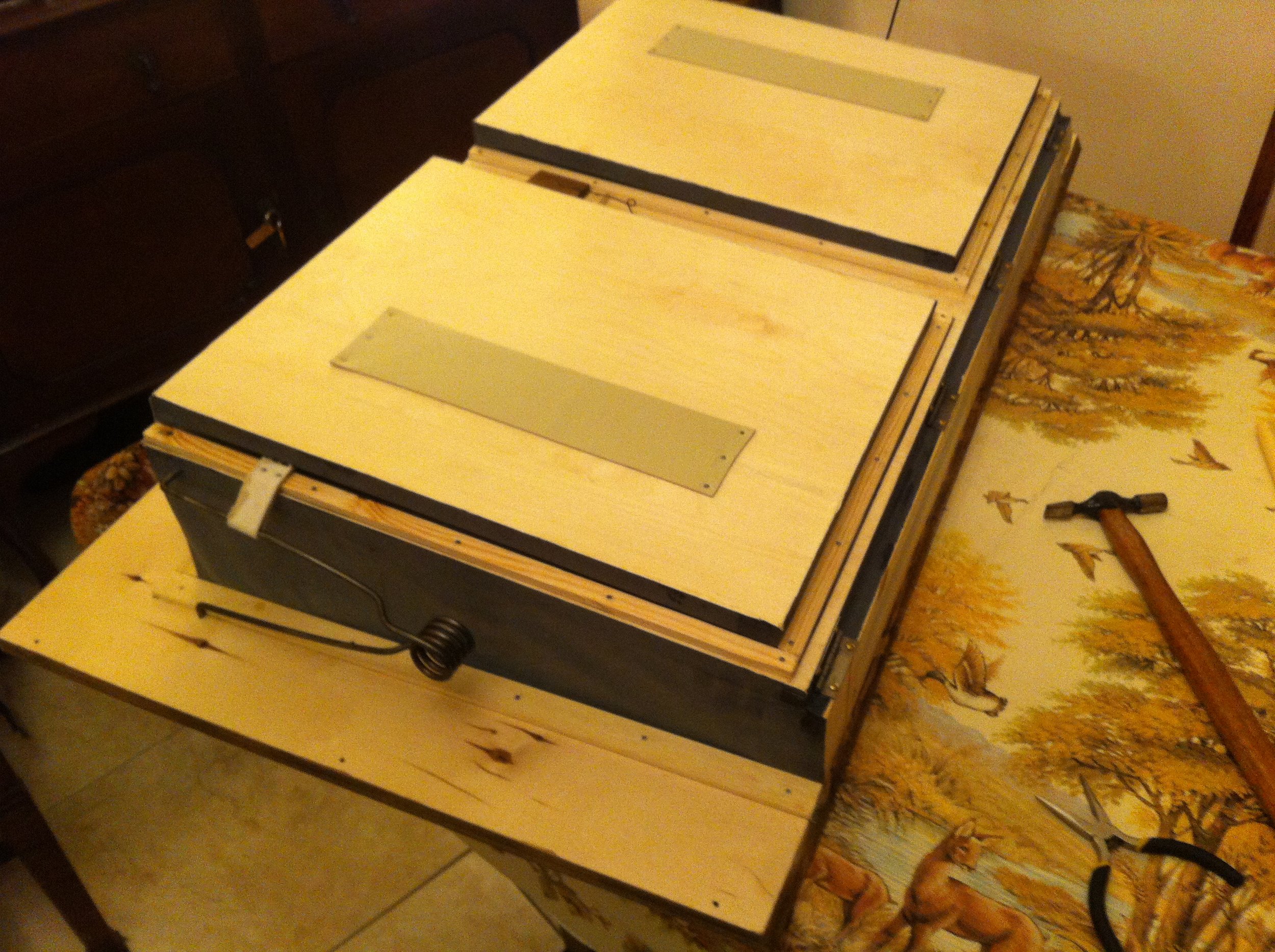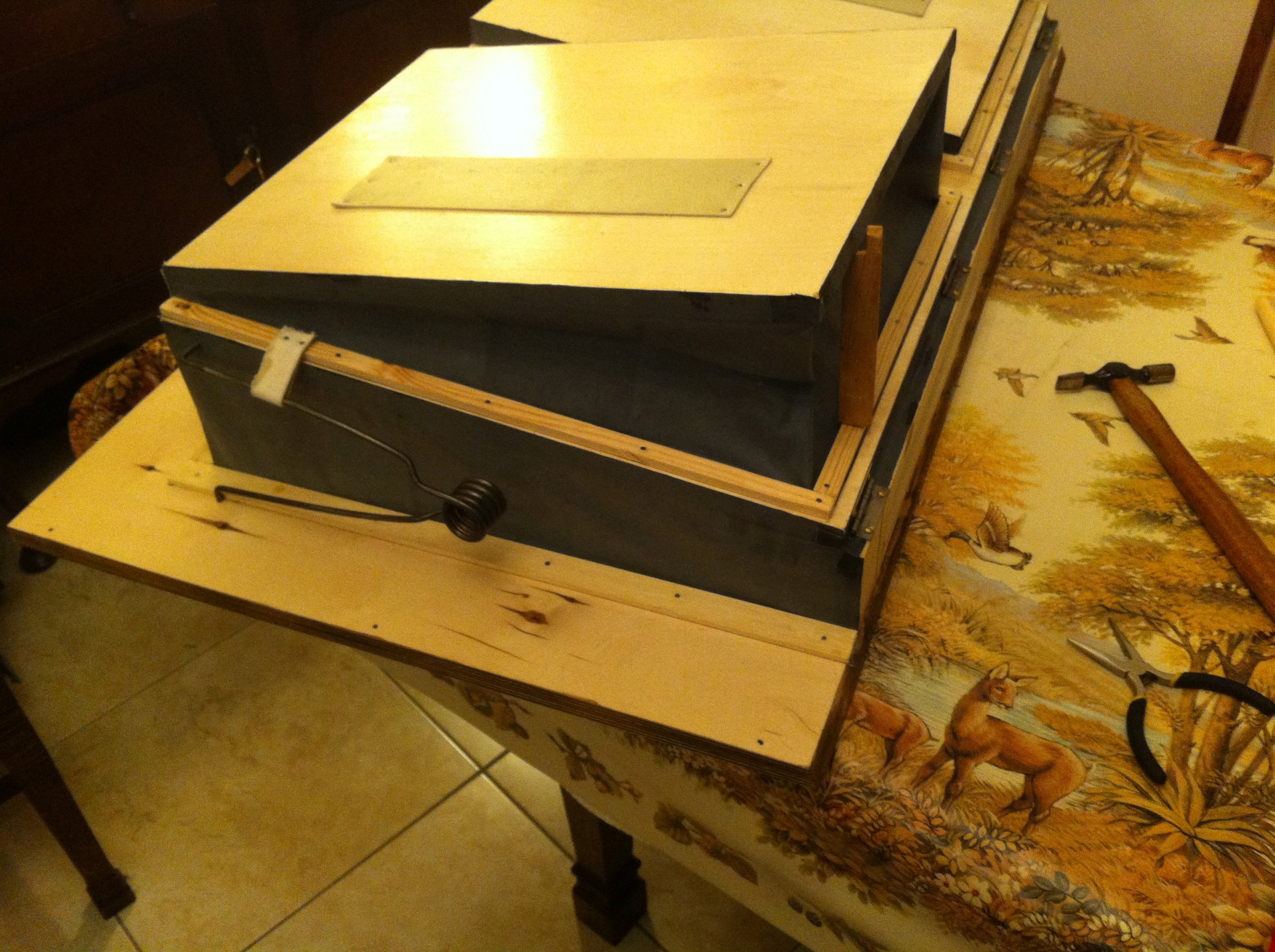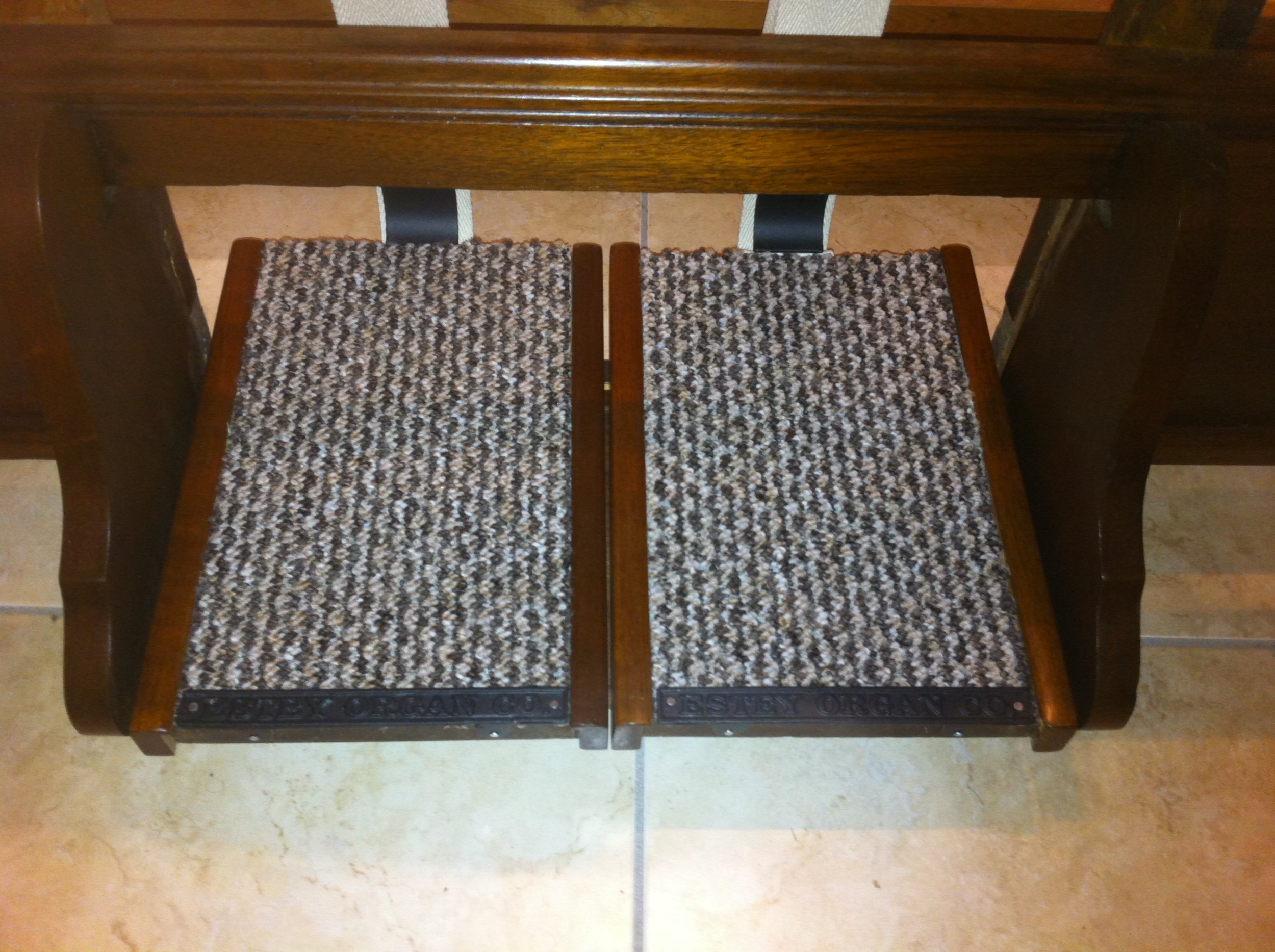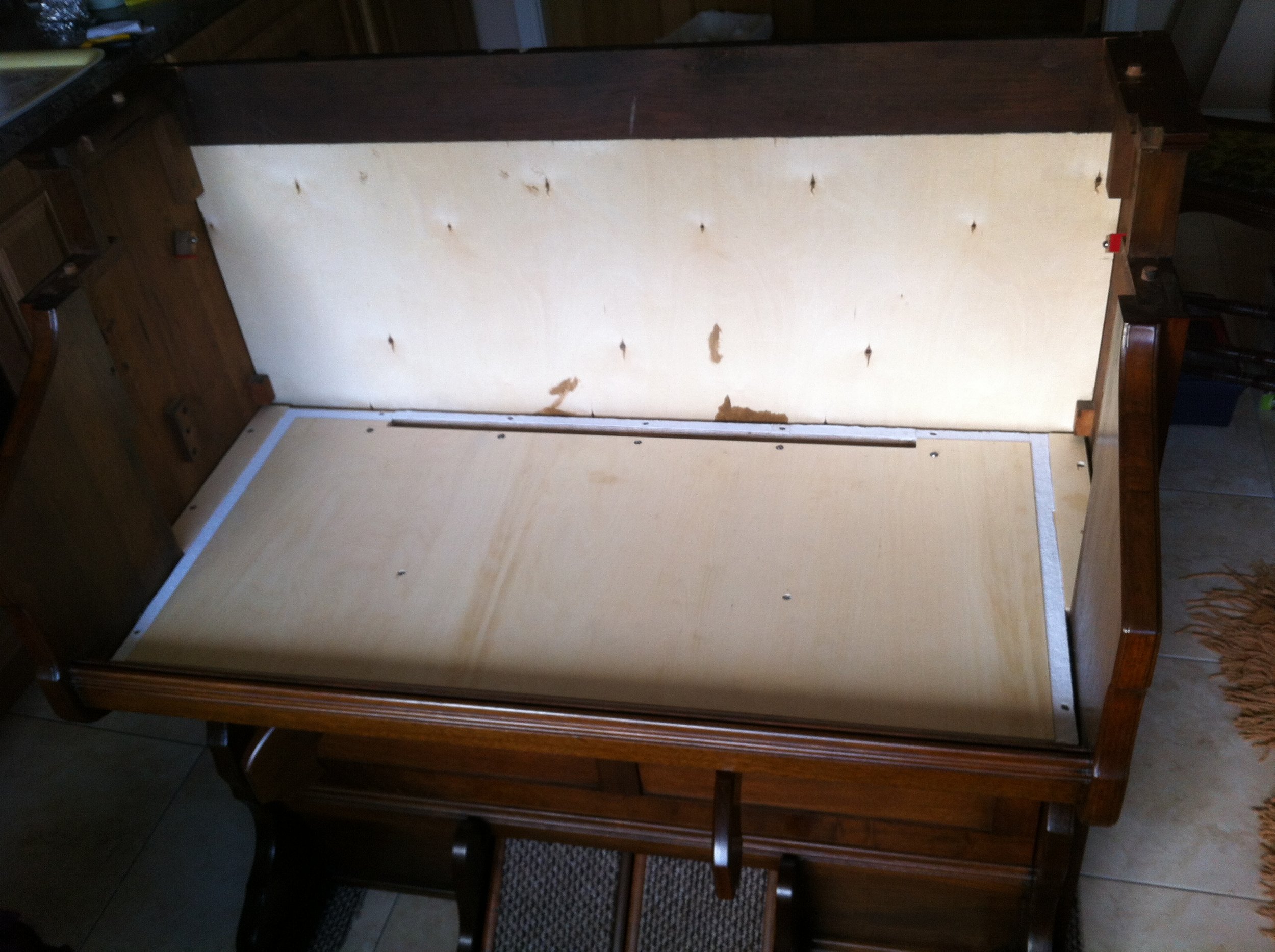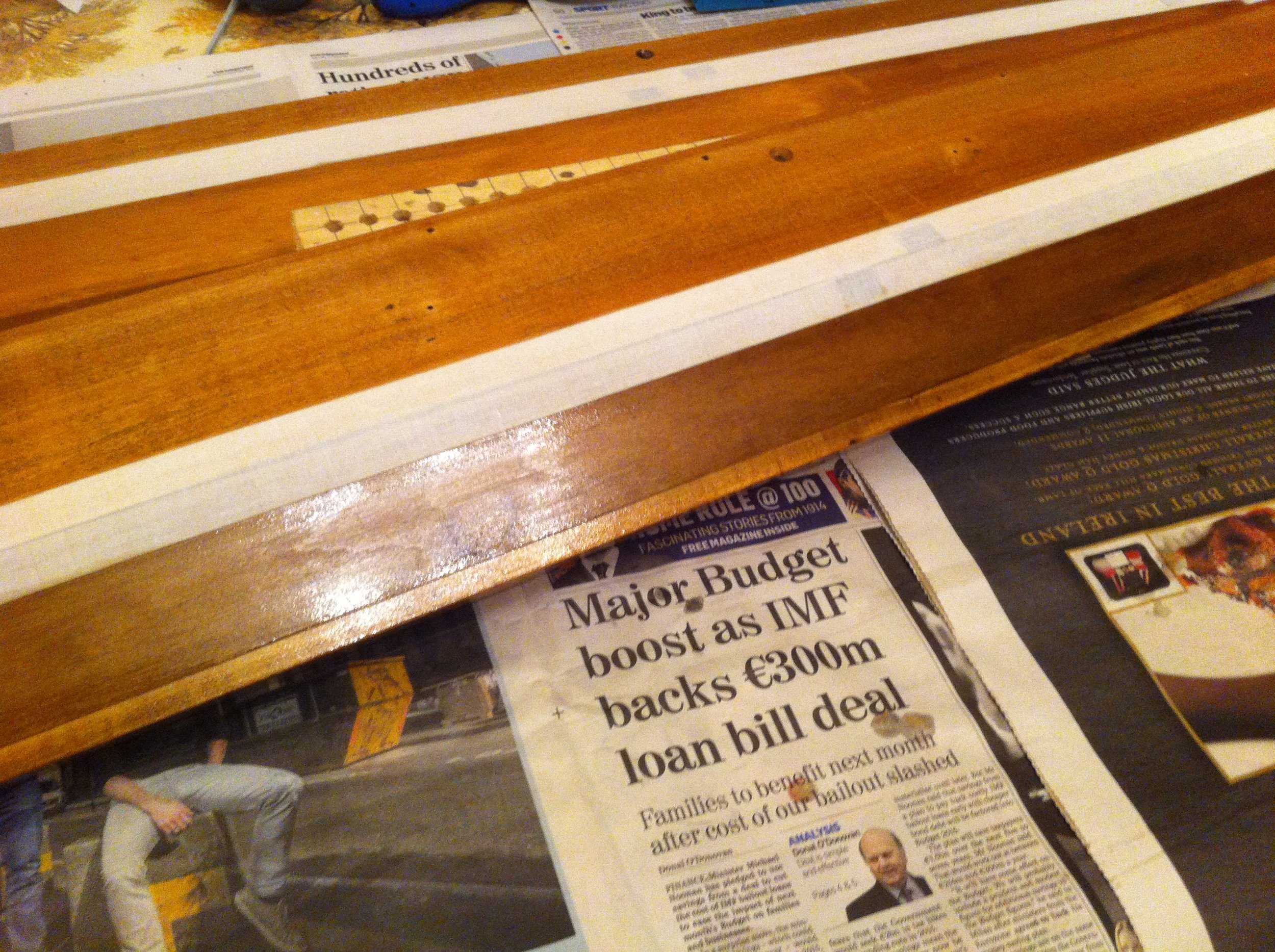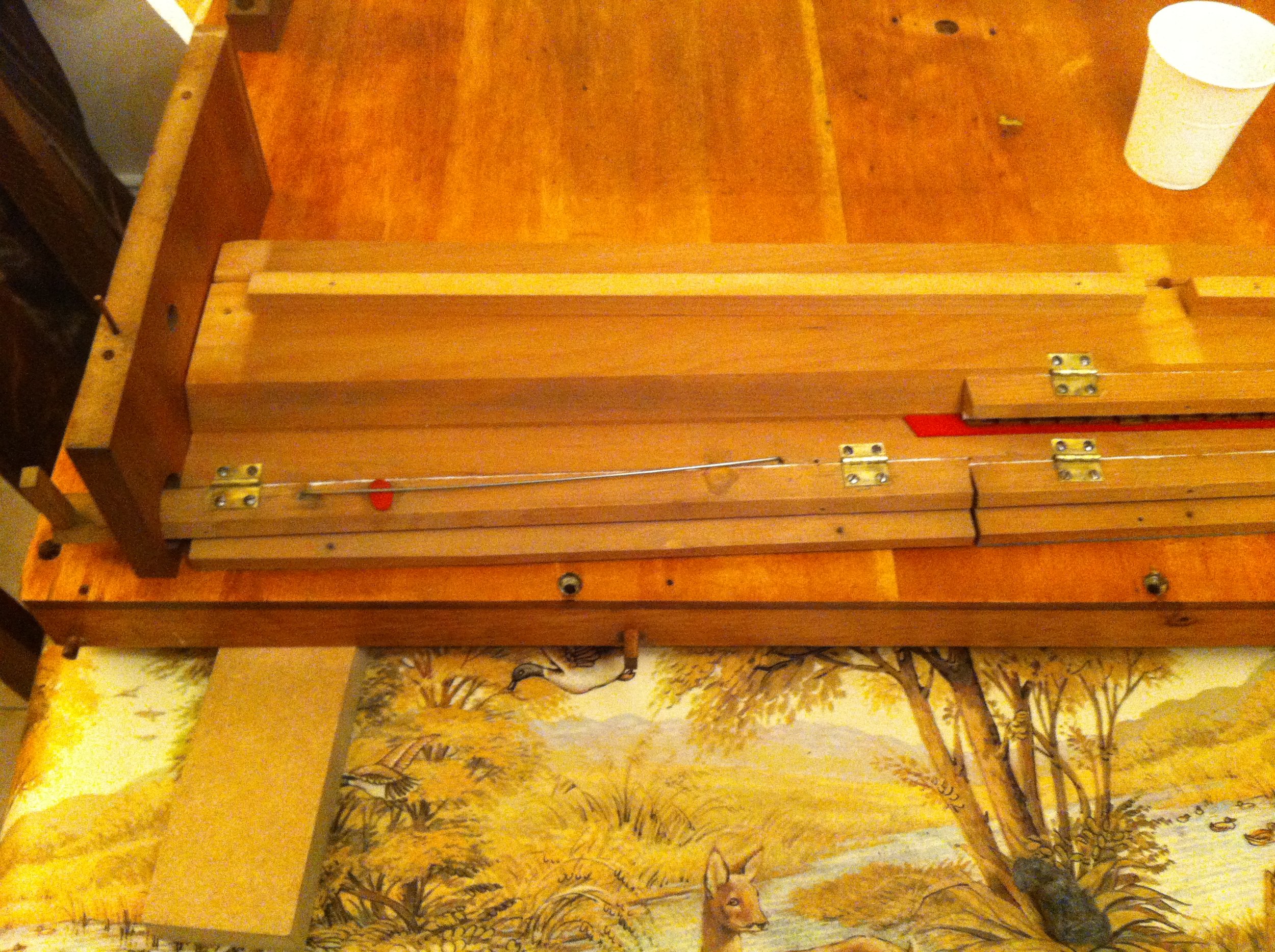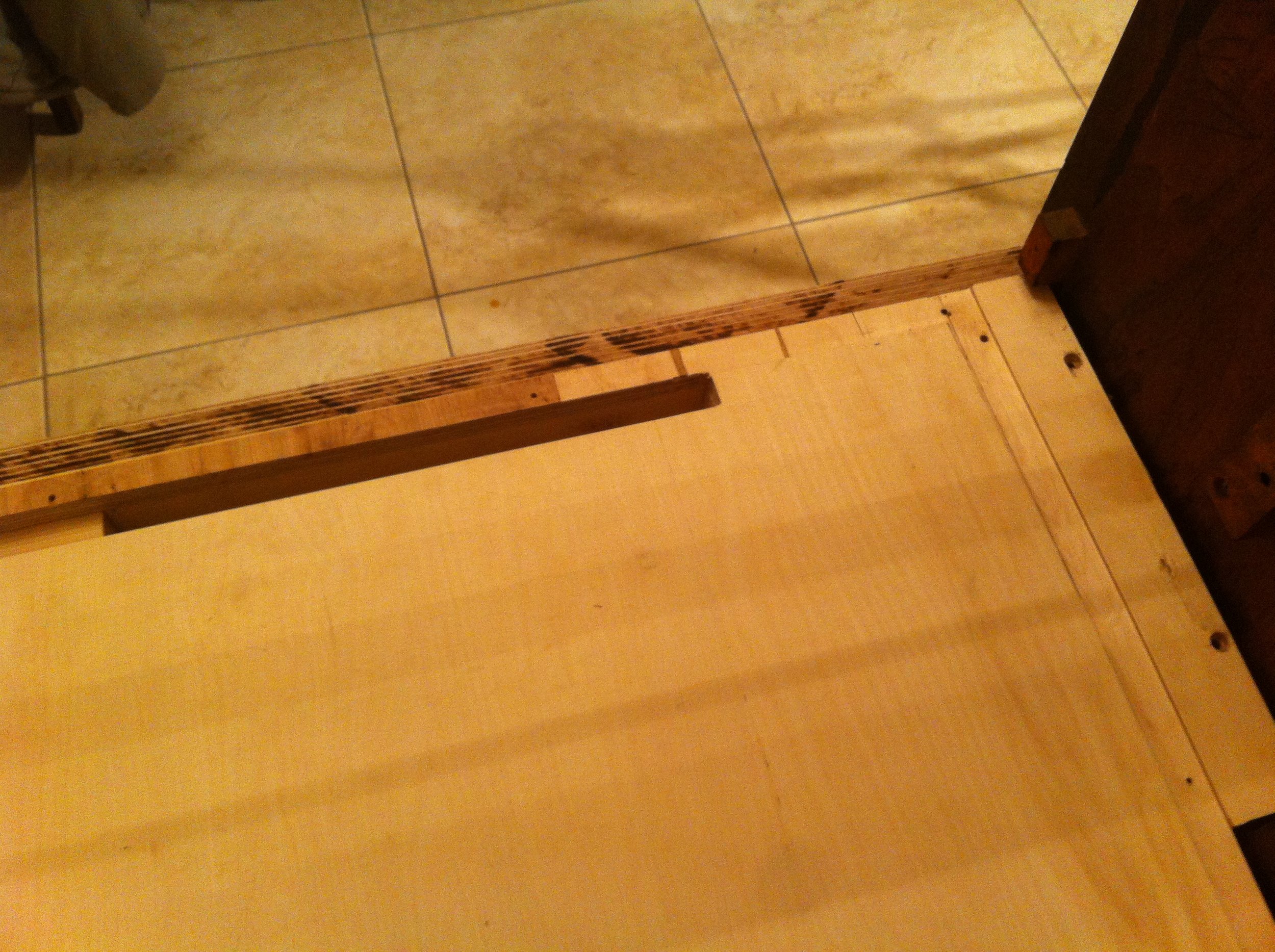This reed organ is an Estey Model N parlor organ. It was intended of domestic use in, as the name suggests, the parlor. It dates from approximately 1899. This date is determined using the serial number on the sound board. The condition was such that the case needed to be stripped completely and refinished in French polish. The bellows and foundation board were badly infested with woodworm to the extent that they needed to be completely replaced. The upper action needed the usual treatment. This treatment comprised of cleaning everything, refinishing the sound board and replacing felt and leathers where necessary. To the left are some pictures of what the organ looked like before restoration.

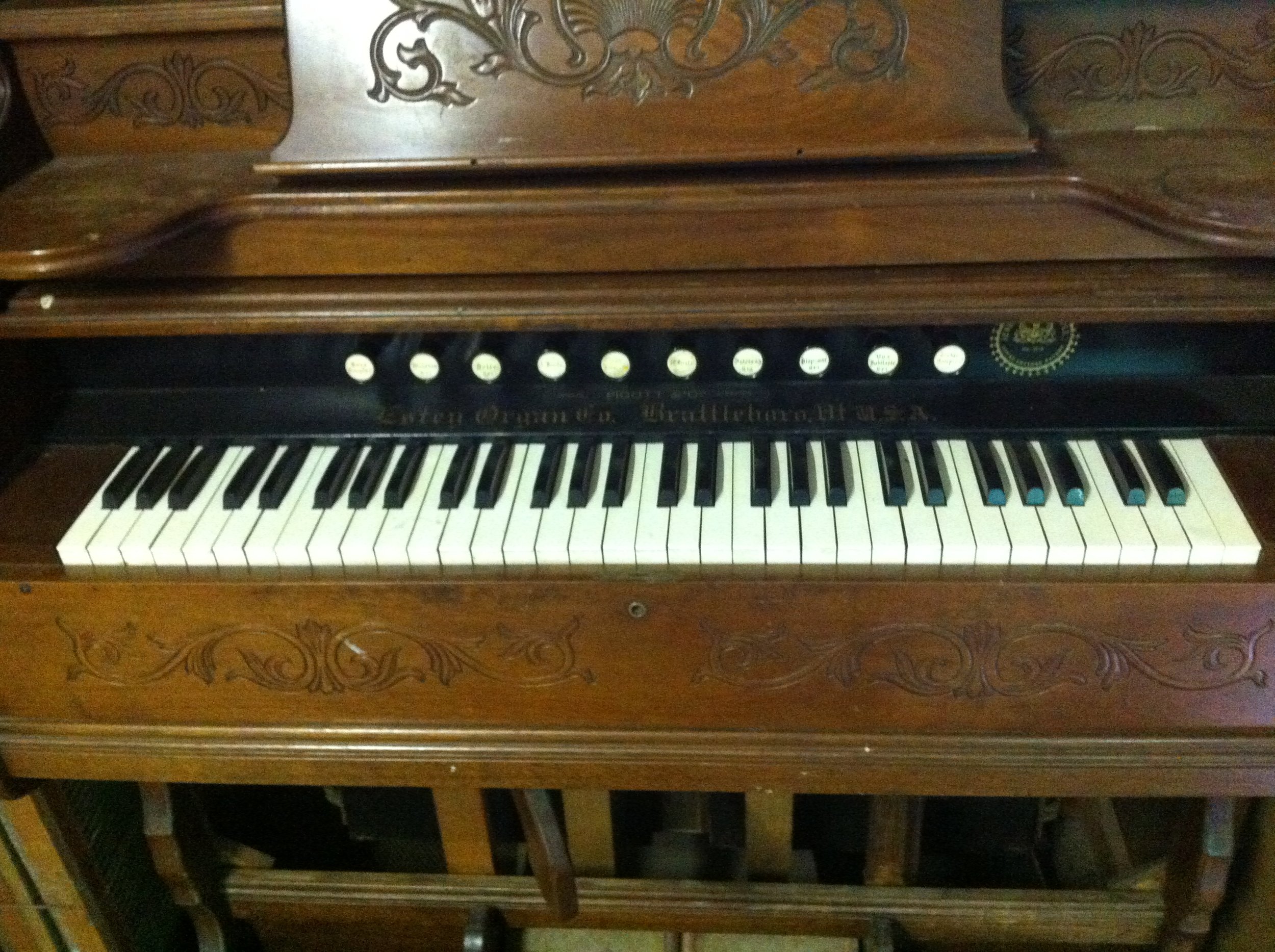

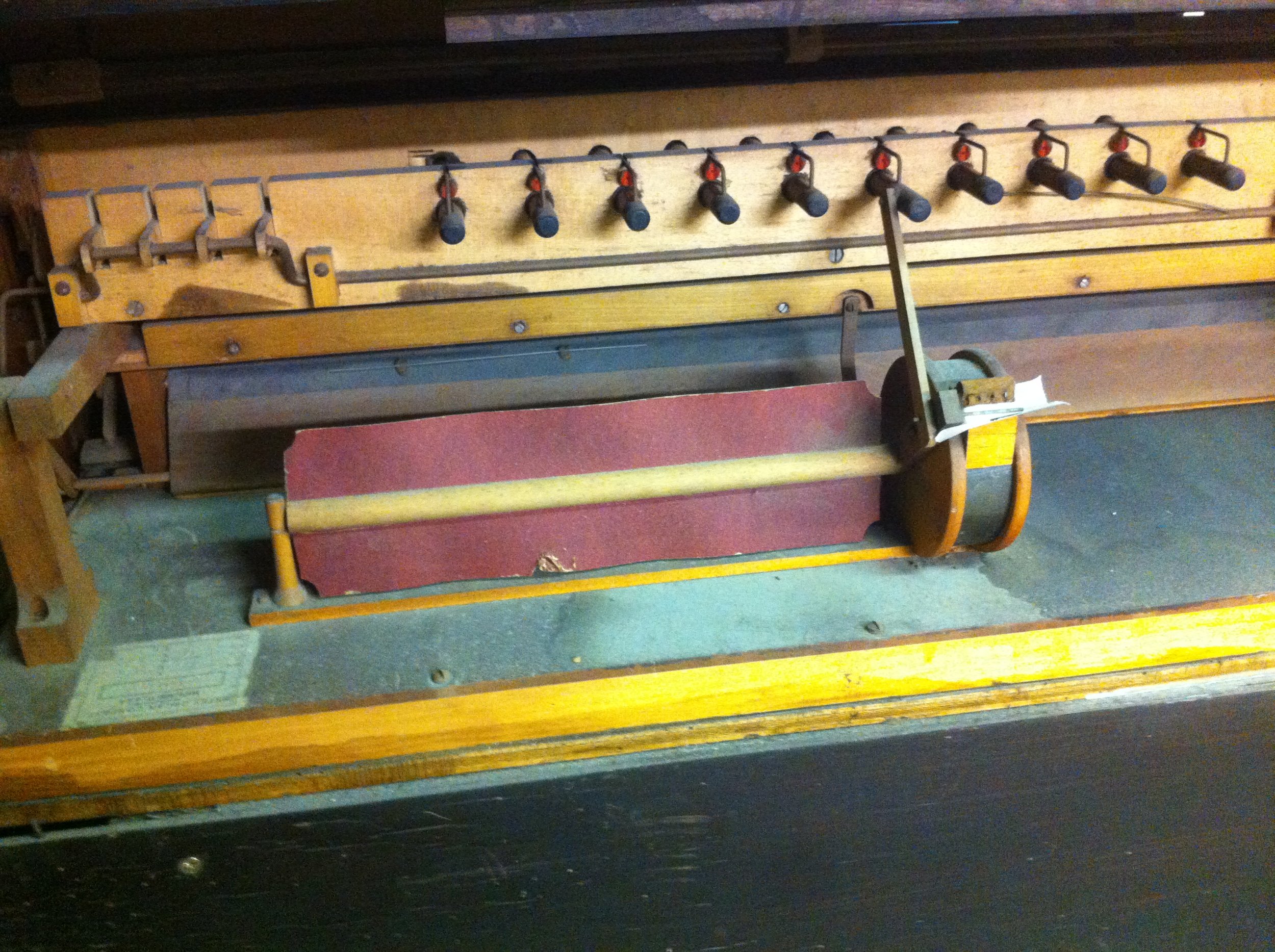
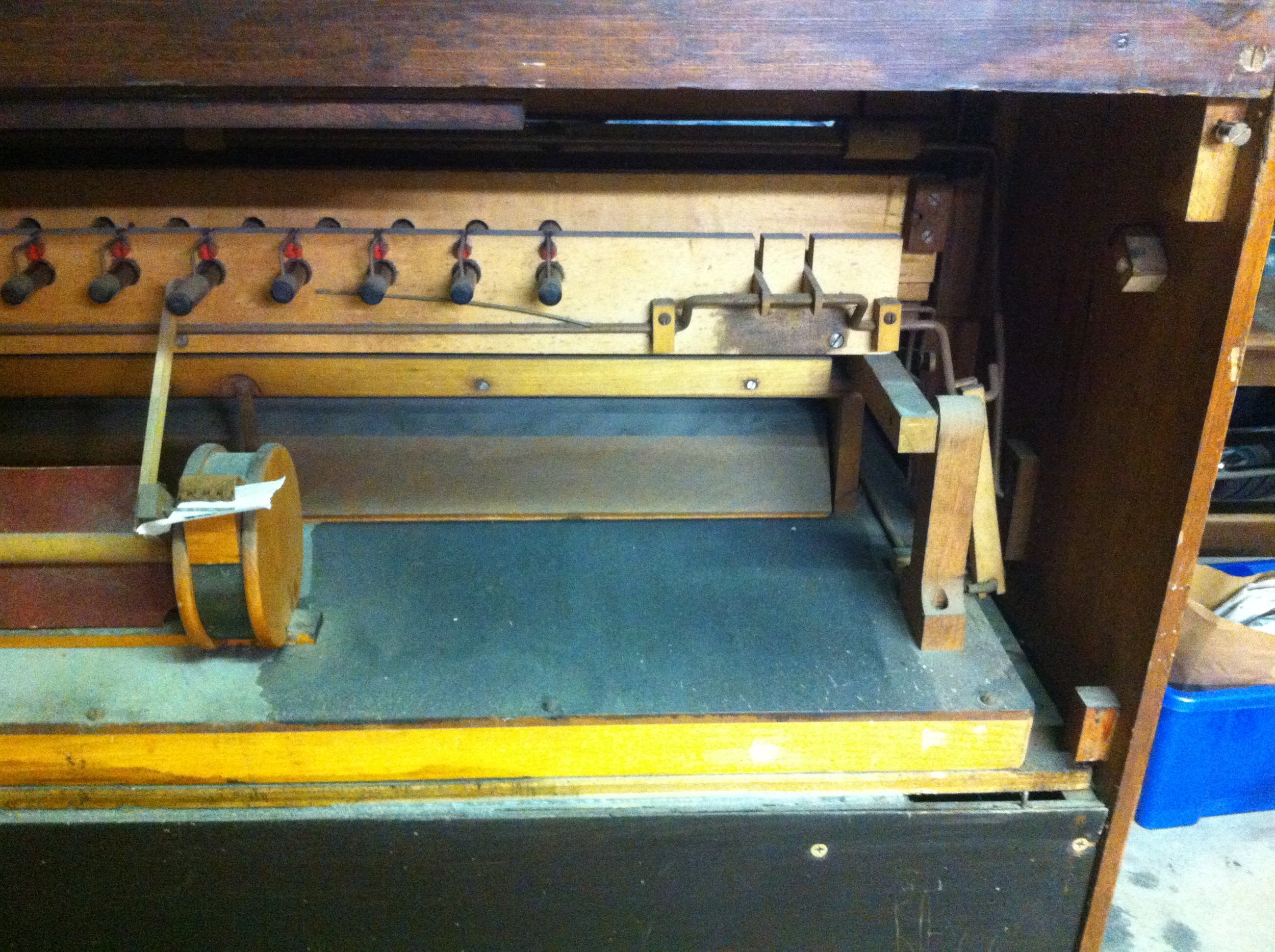
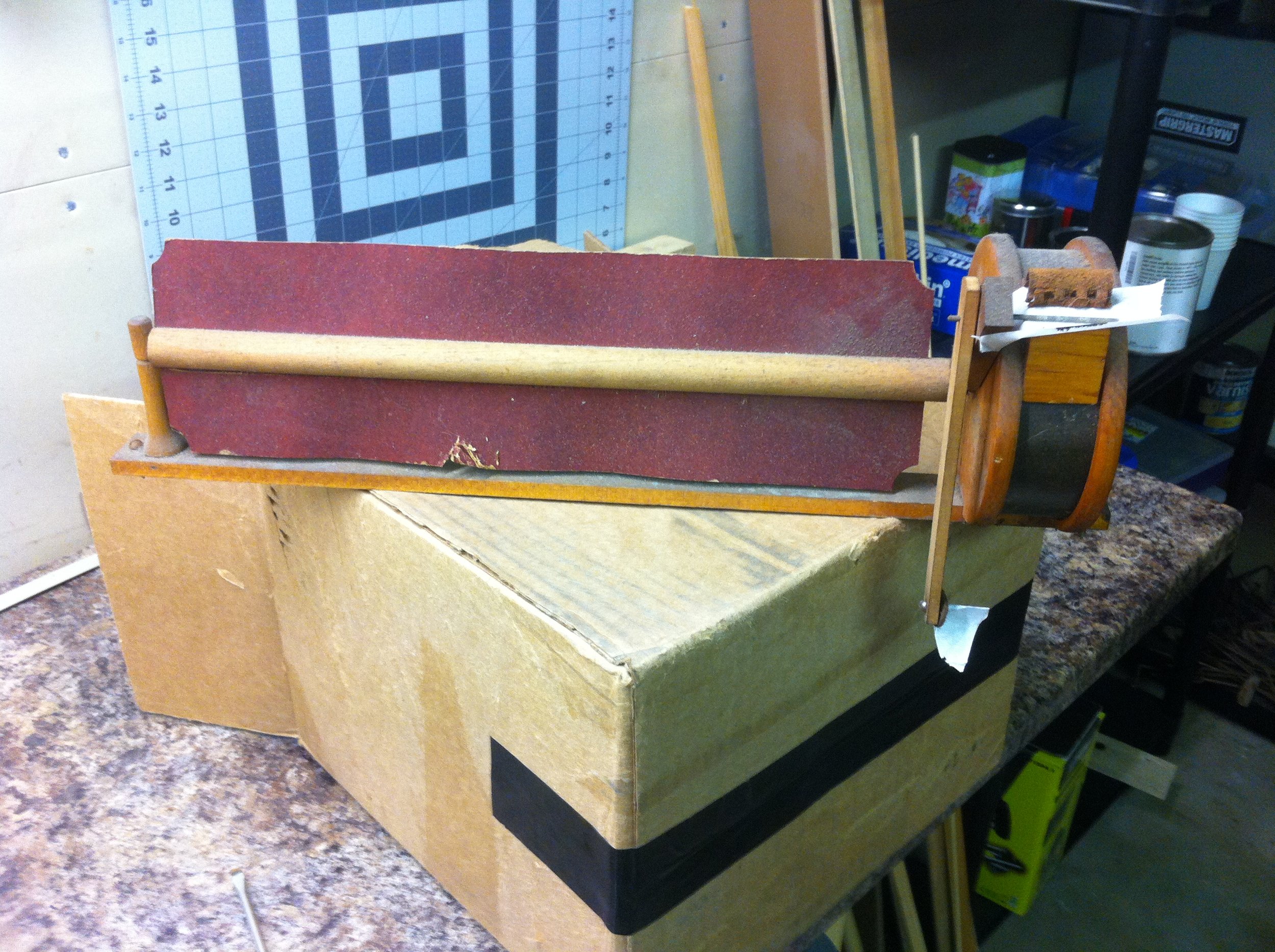
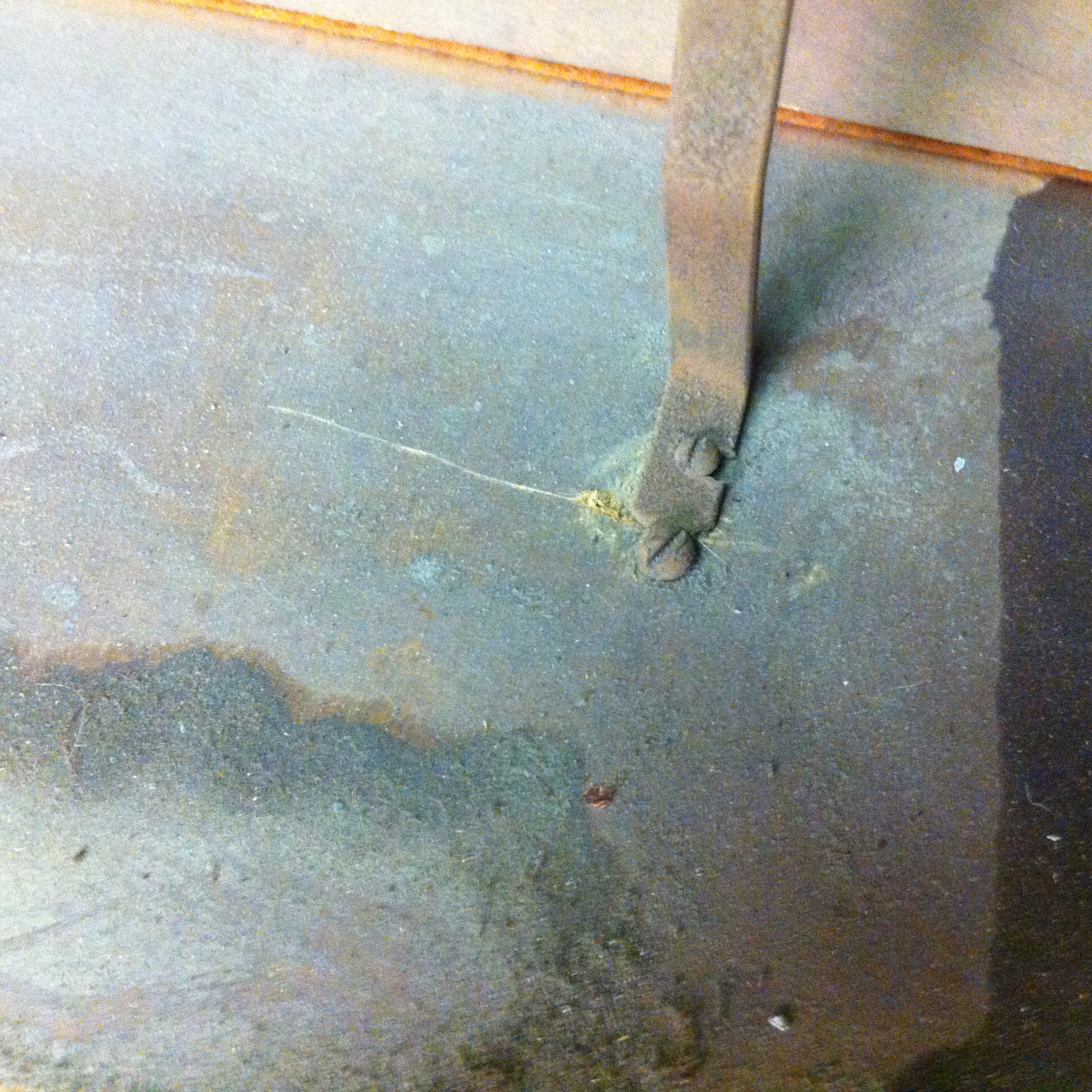
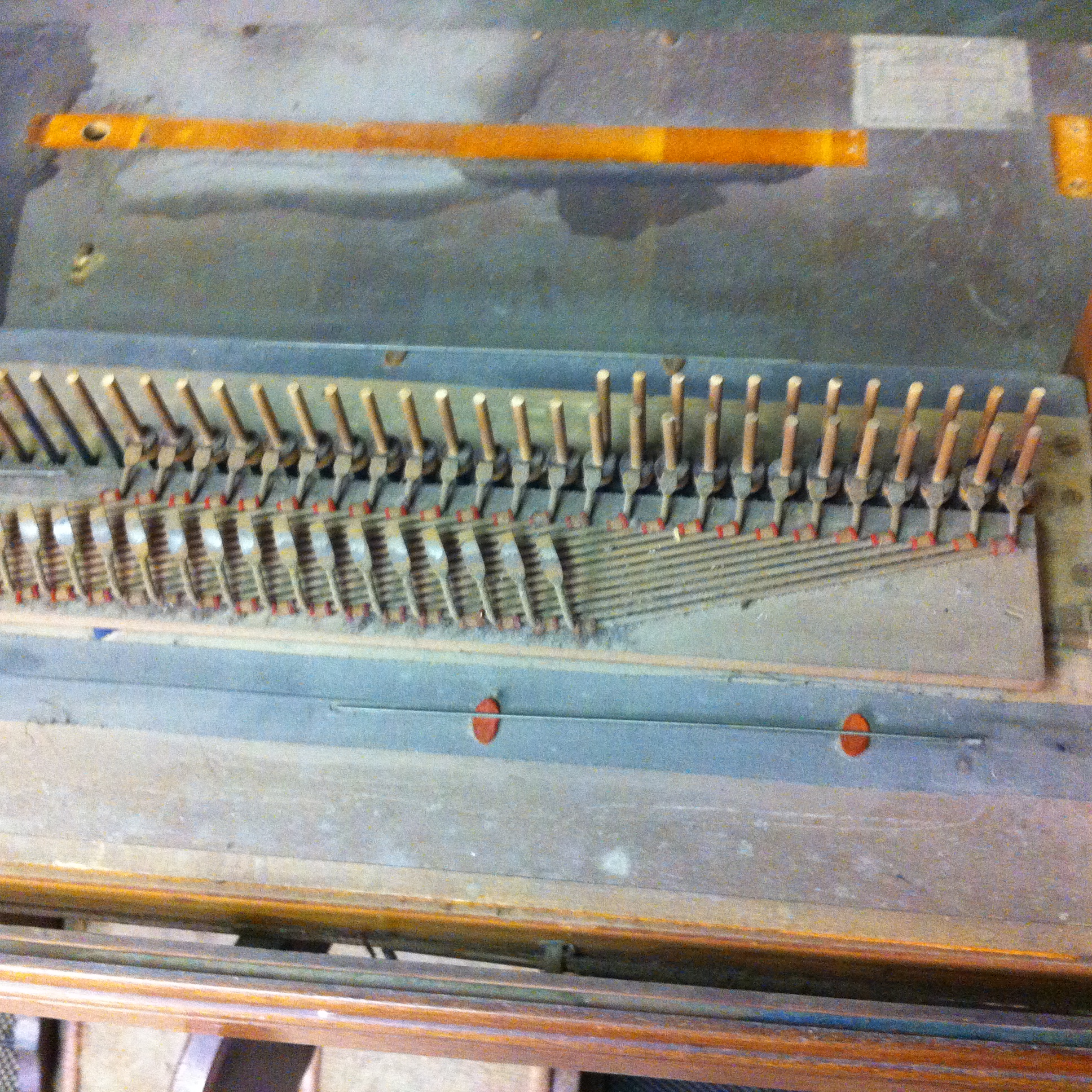

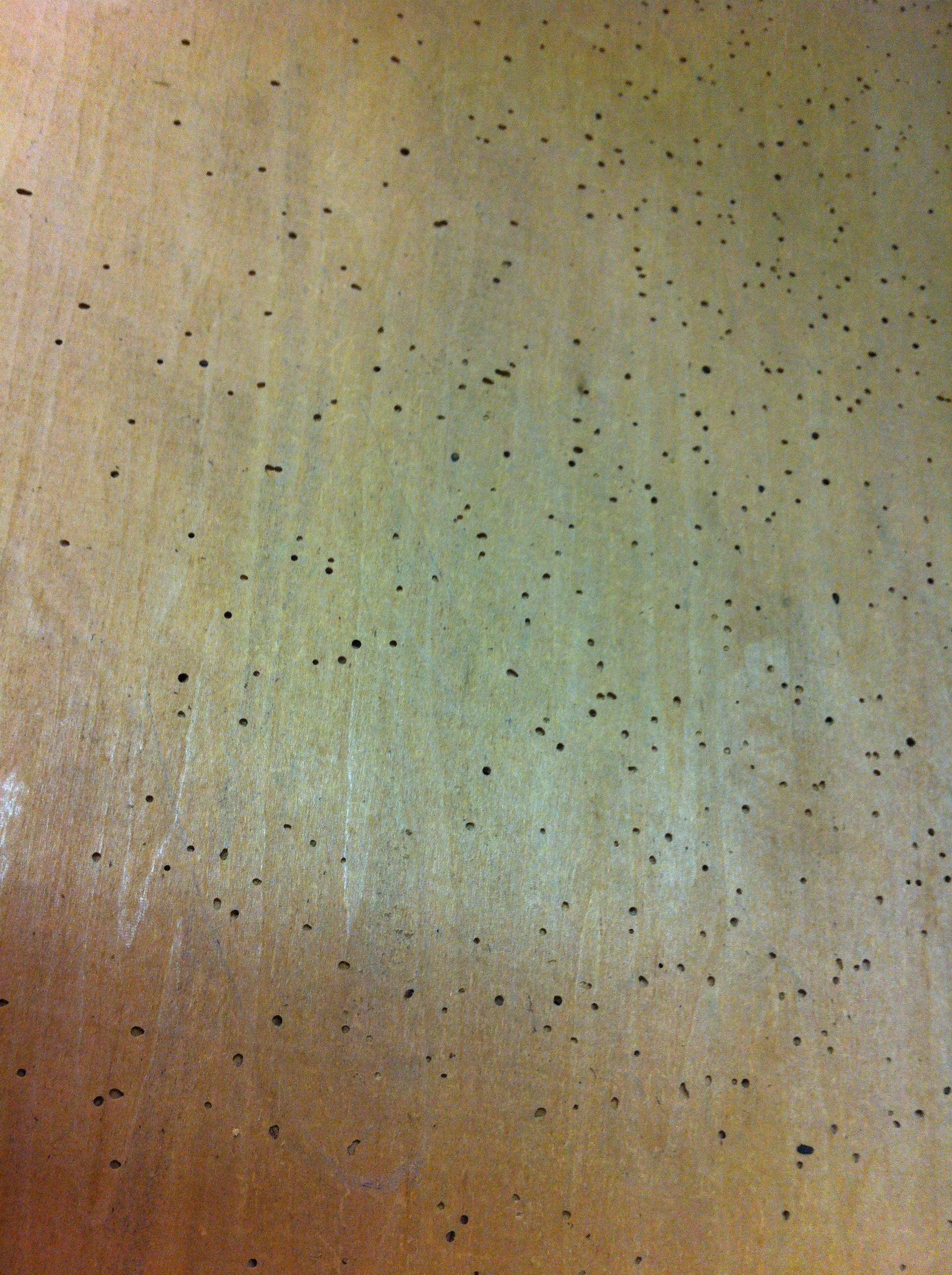
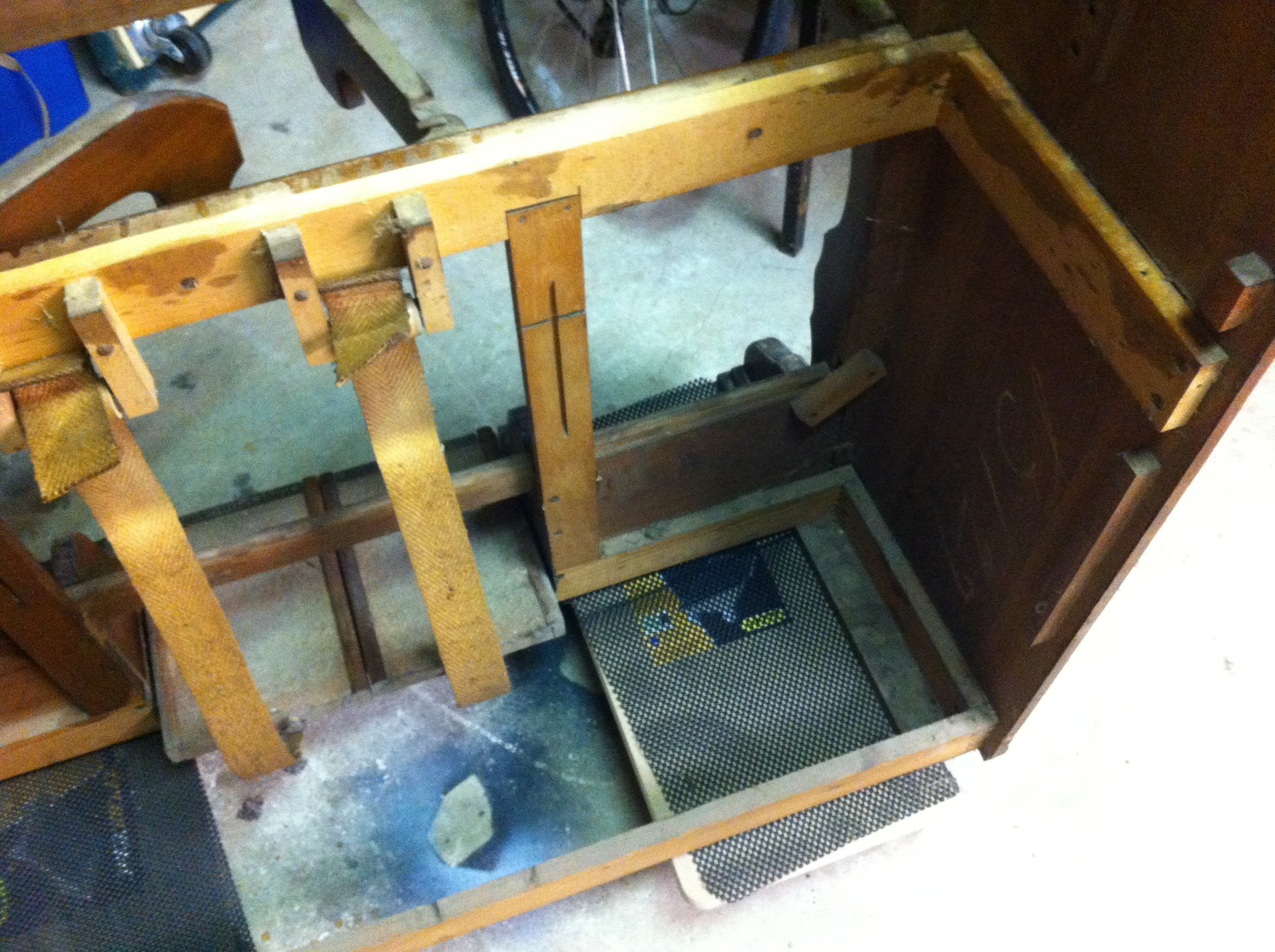


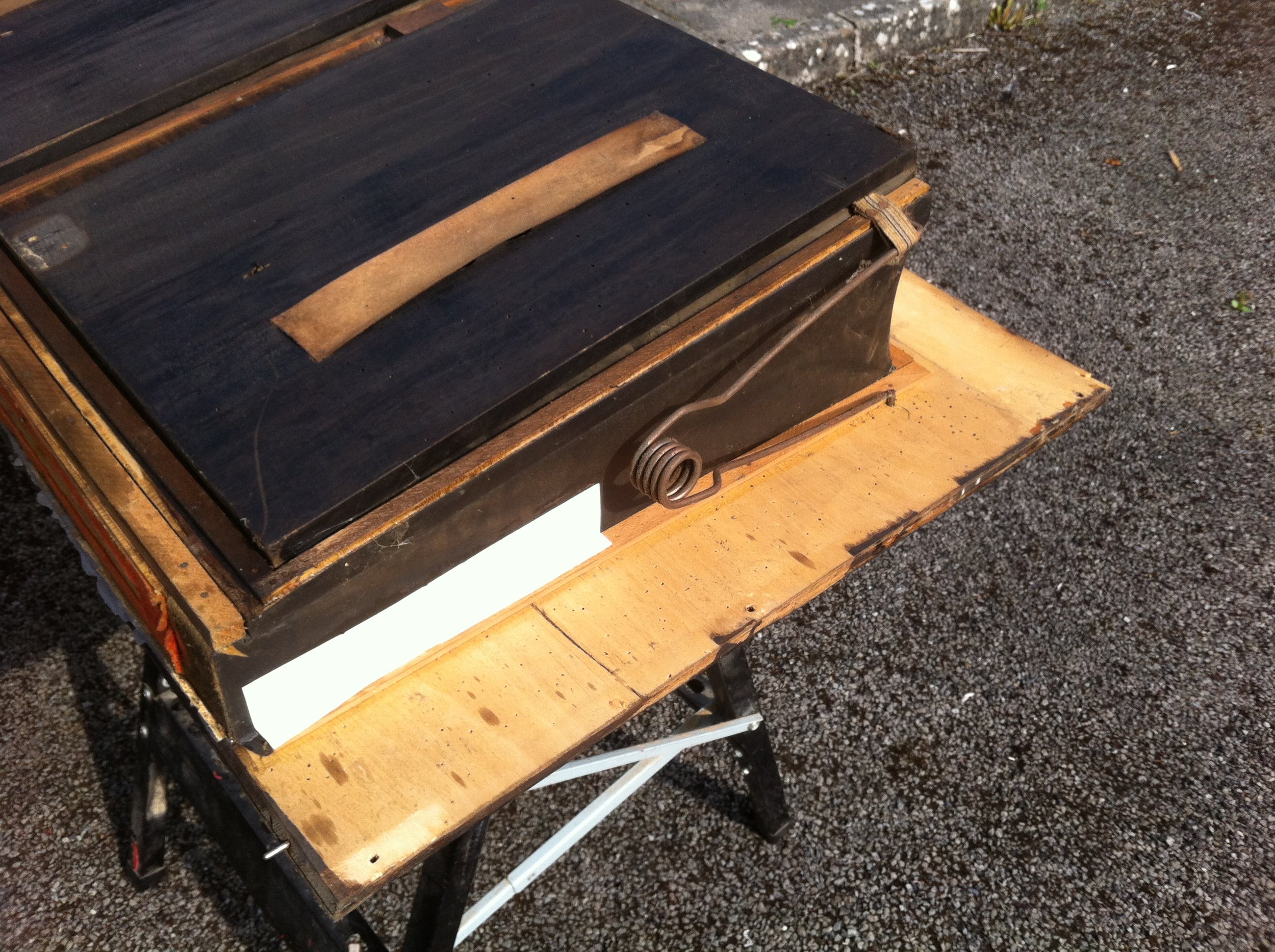
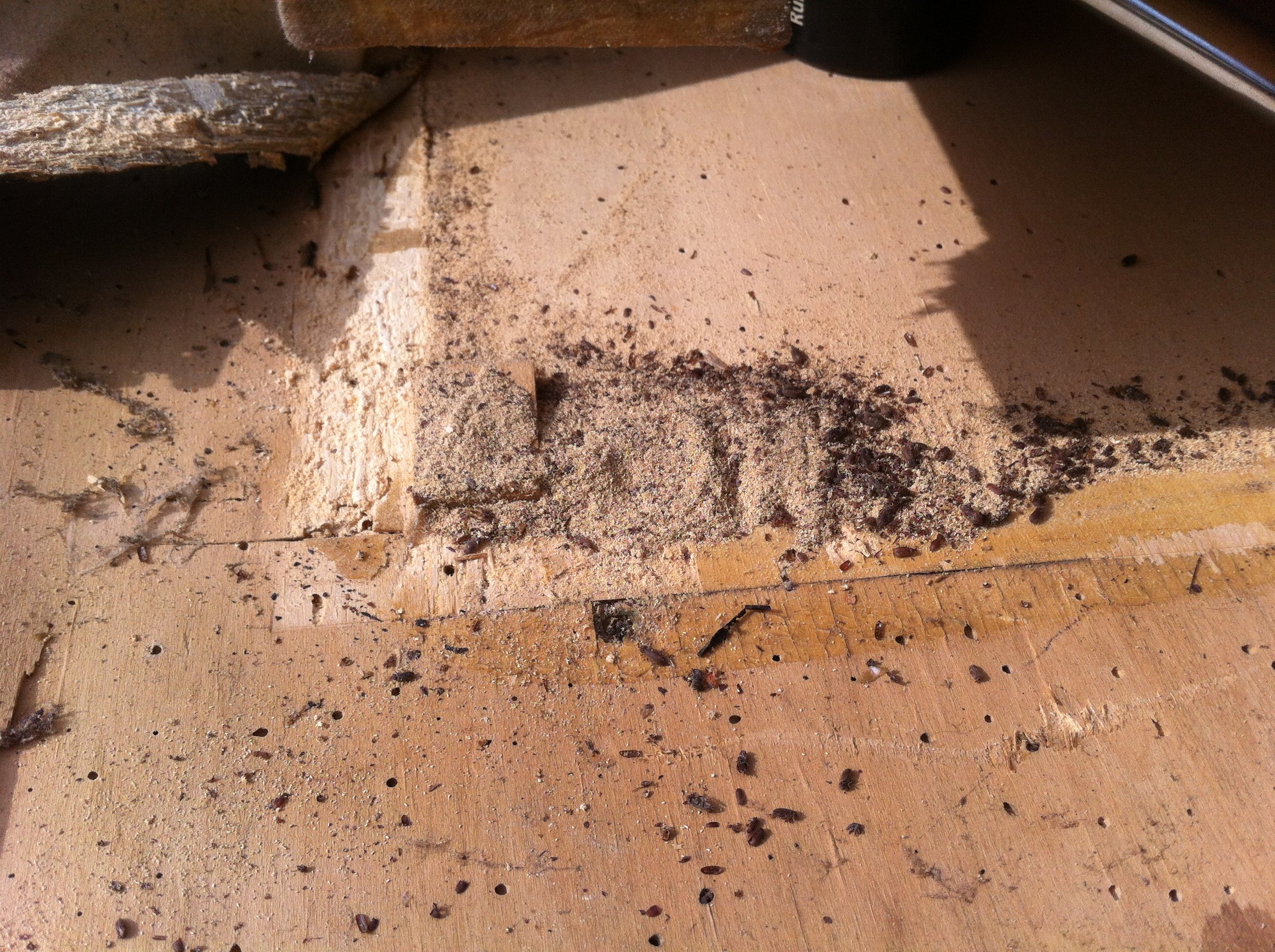

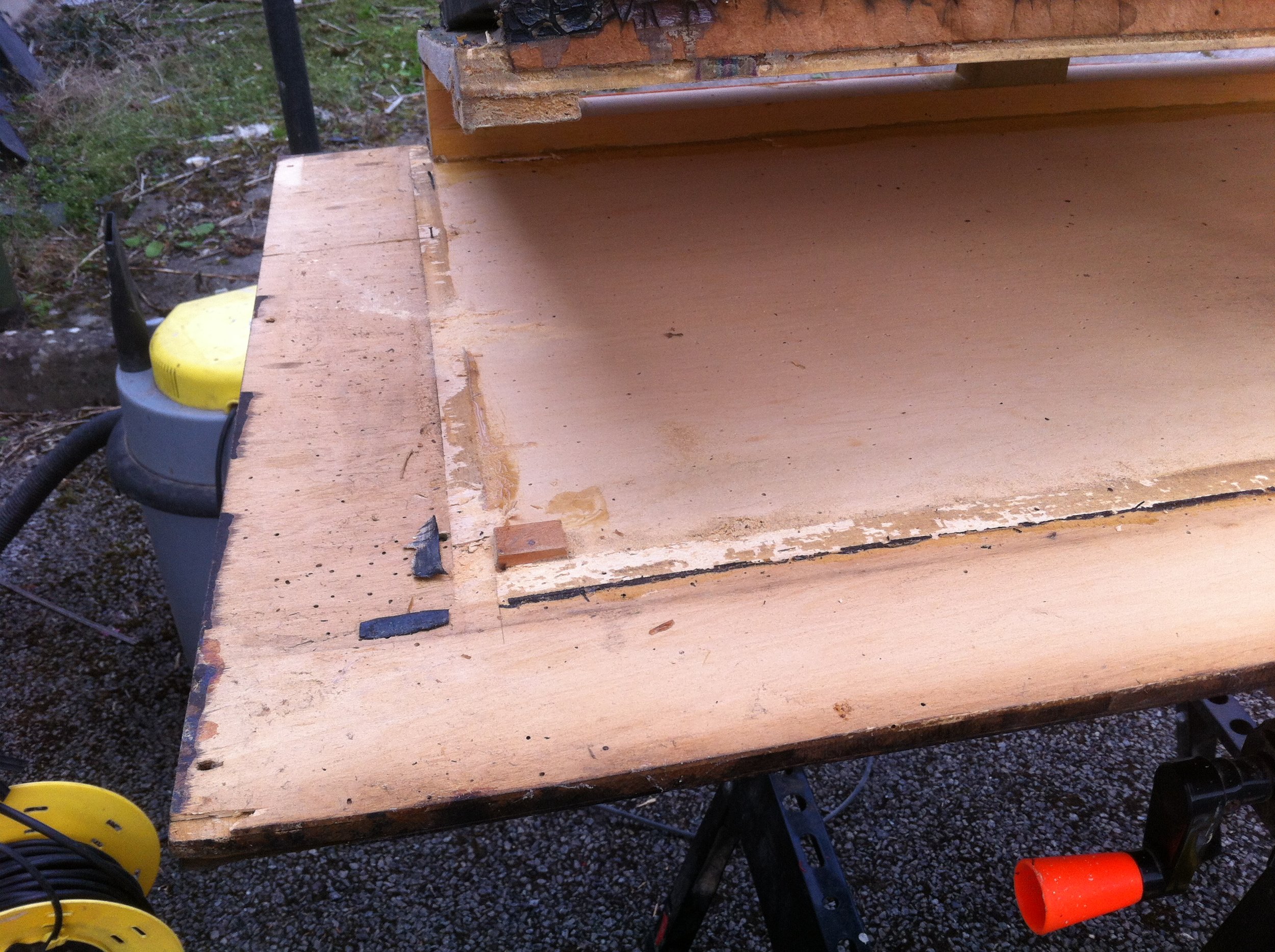


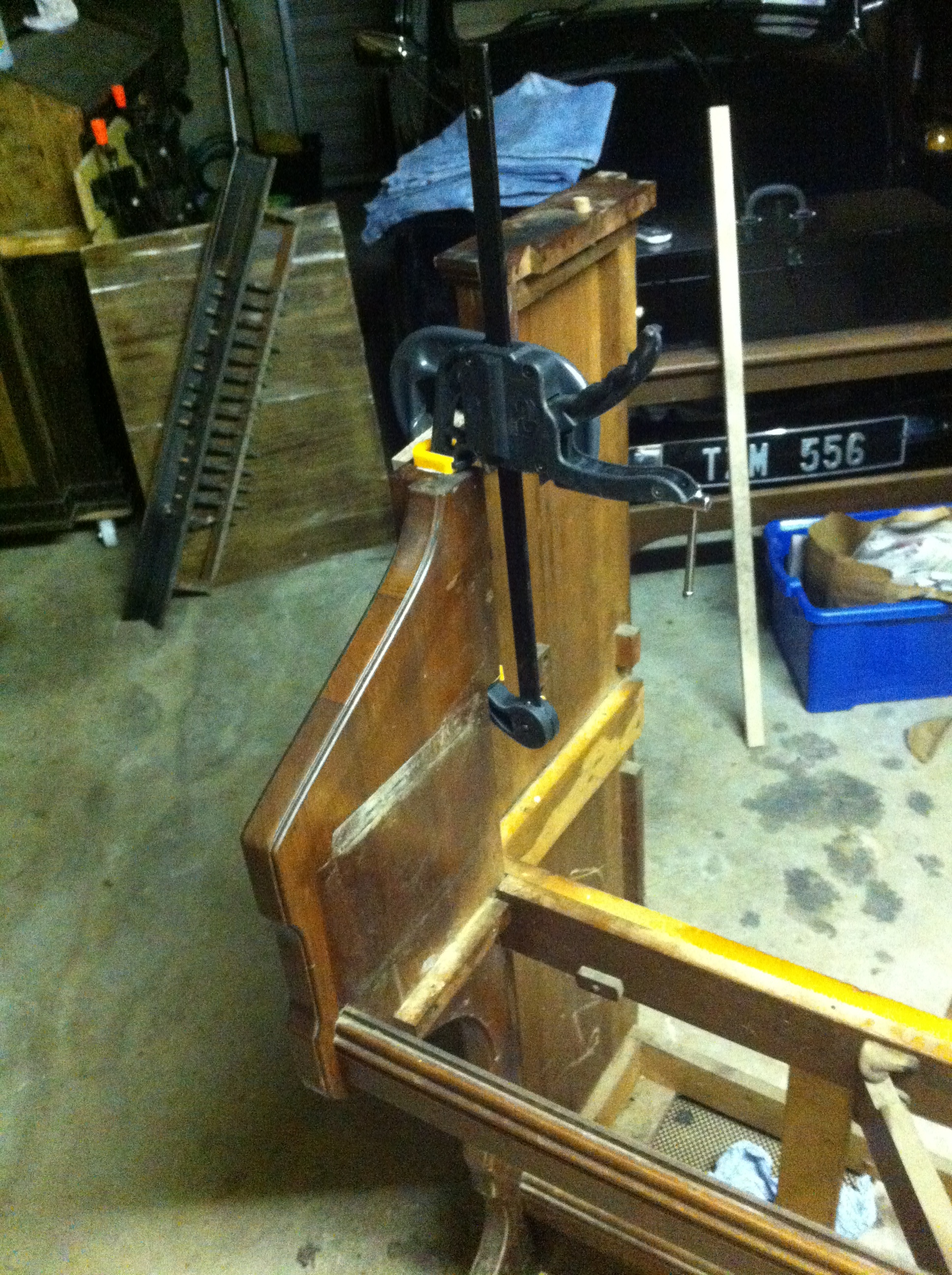
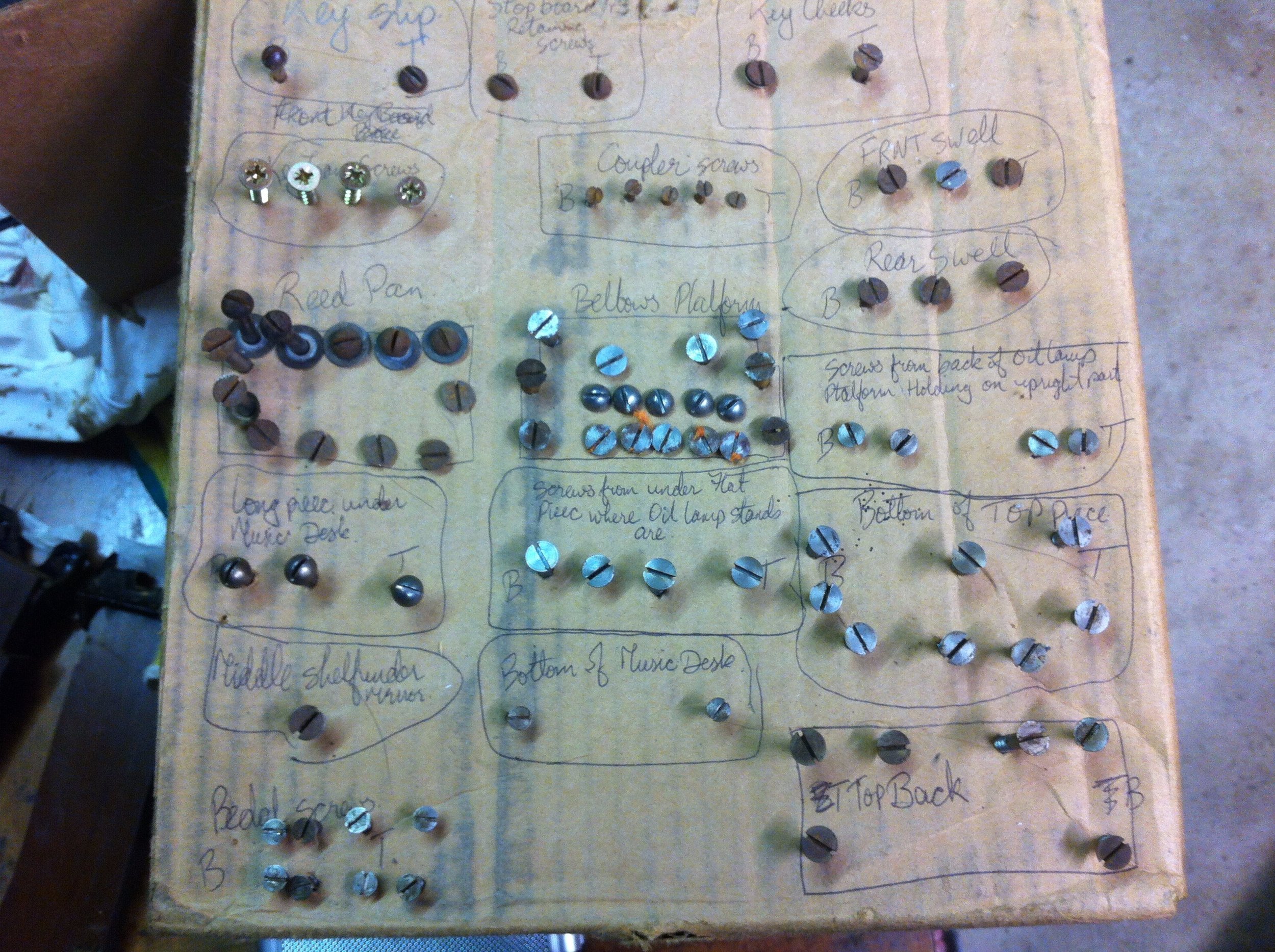
The bellows platform, being made from 18mm plywood, needed modification to serve its purpose. The original material was approximately 15mm. To use unmodified 18mm ply would leave the whole upper action raised in the case by 3mm. That’s a no go. So I routered out a chanel 3mm deep for the upper action to sit in. This is a solution I have used before when replacing a bellows platform and I find it works well.
What did the upper action need? Here’s a list:
Sound board cleaned, sanded and shellacked
Reed bed felt cleaned
Pallet valve guide pins polished
Pallet valves leather replacement
Mute leather replaced
Reeds ultrasonically cleaned
Swell shades sanded and shellacked and felt replaced
Coupler mechanisms cleaned and linkages re-bushed and graphited
Keyboard frame cleaned and guide pins polished
Keys re-bushed and felt replaced
All keys polished and levelled
Stop board rebuilt, including name board refinished
Finally the organ was tuned to A455(original tuning)
The case was diamantled, loose parts glued back in place and then prepared for refinishing. I used this organ to make videos on how to refinish a reed organ case. These can be viewed through the restoration videos tab under videos.
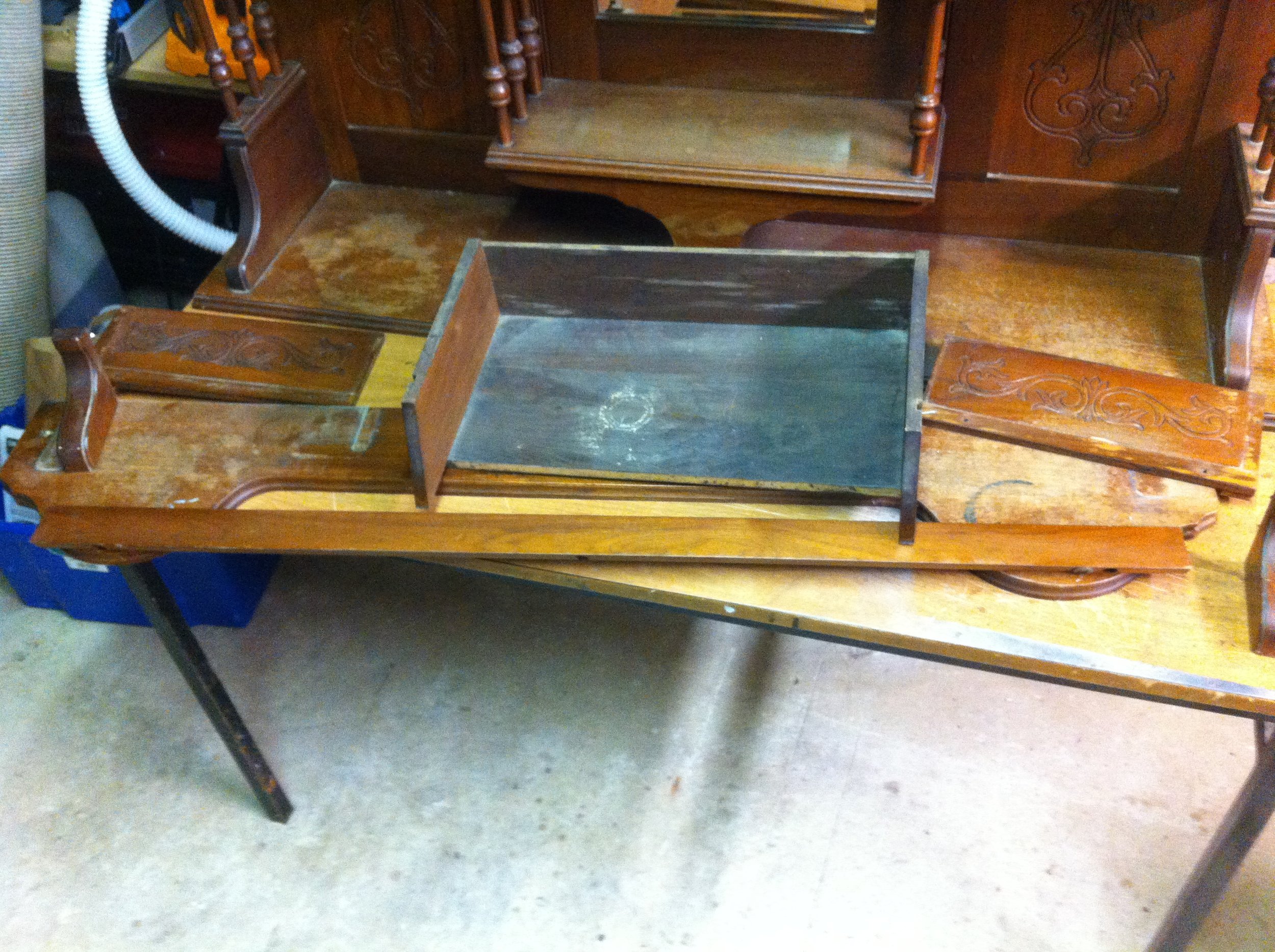

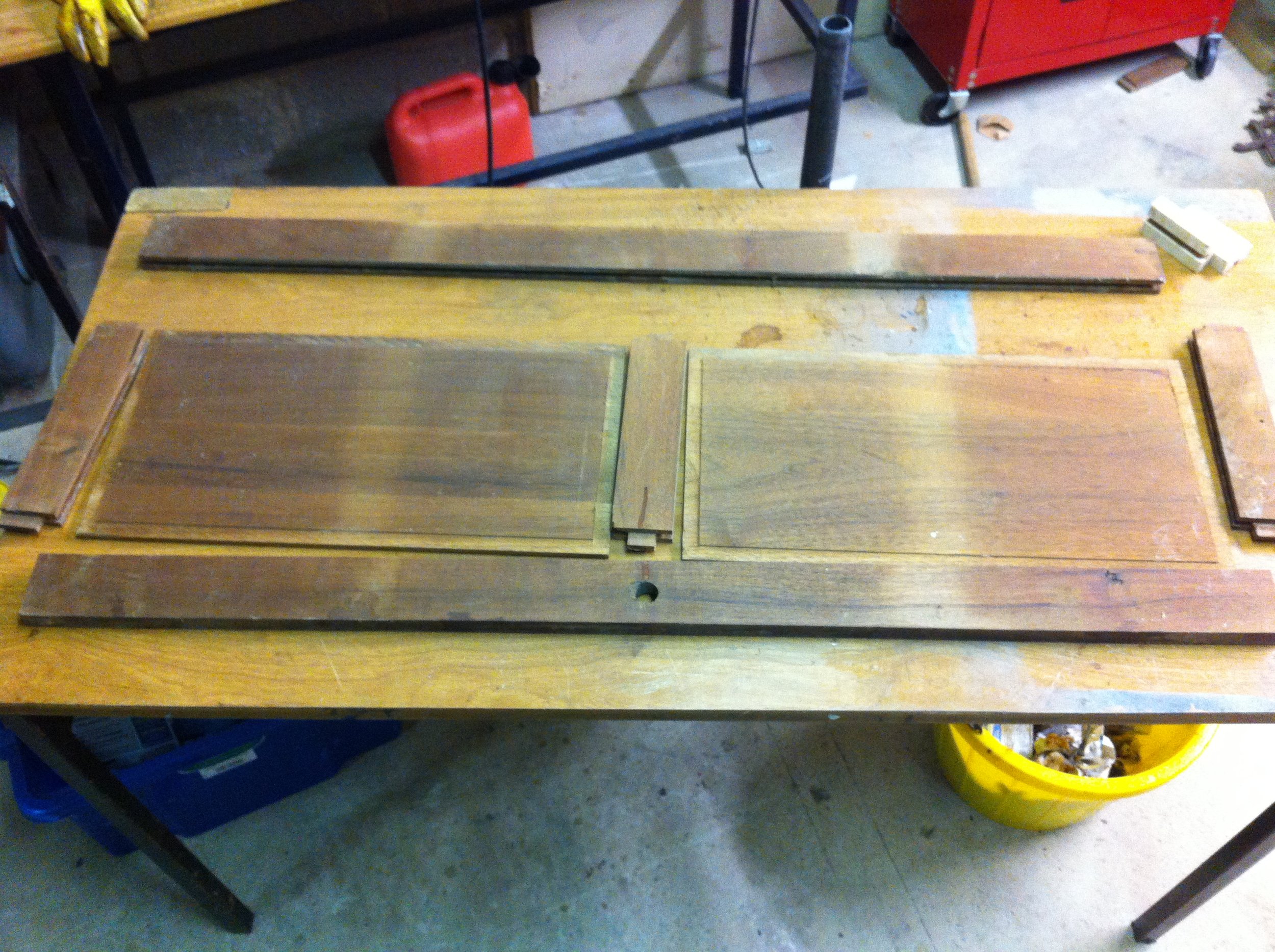


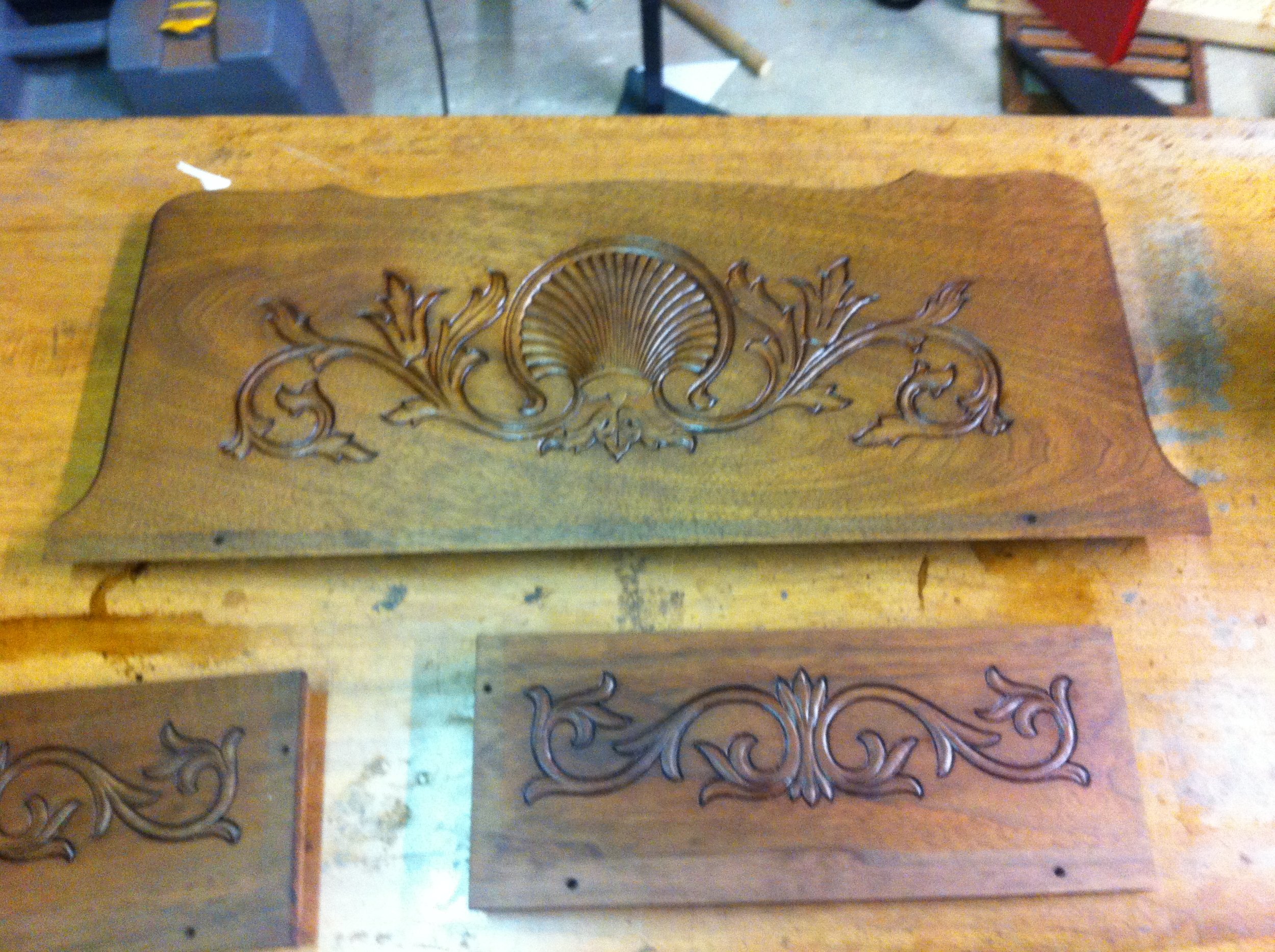


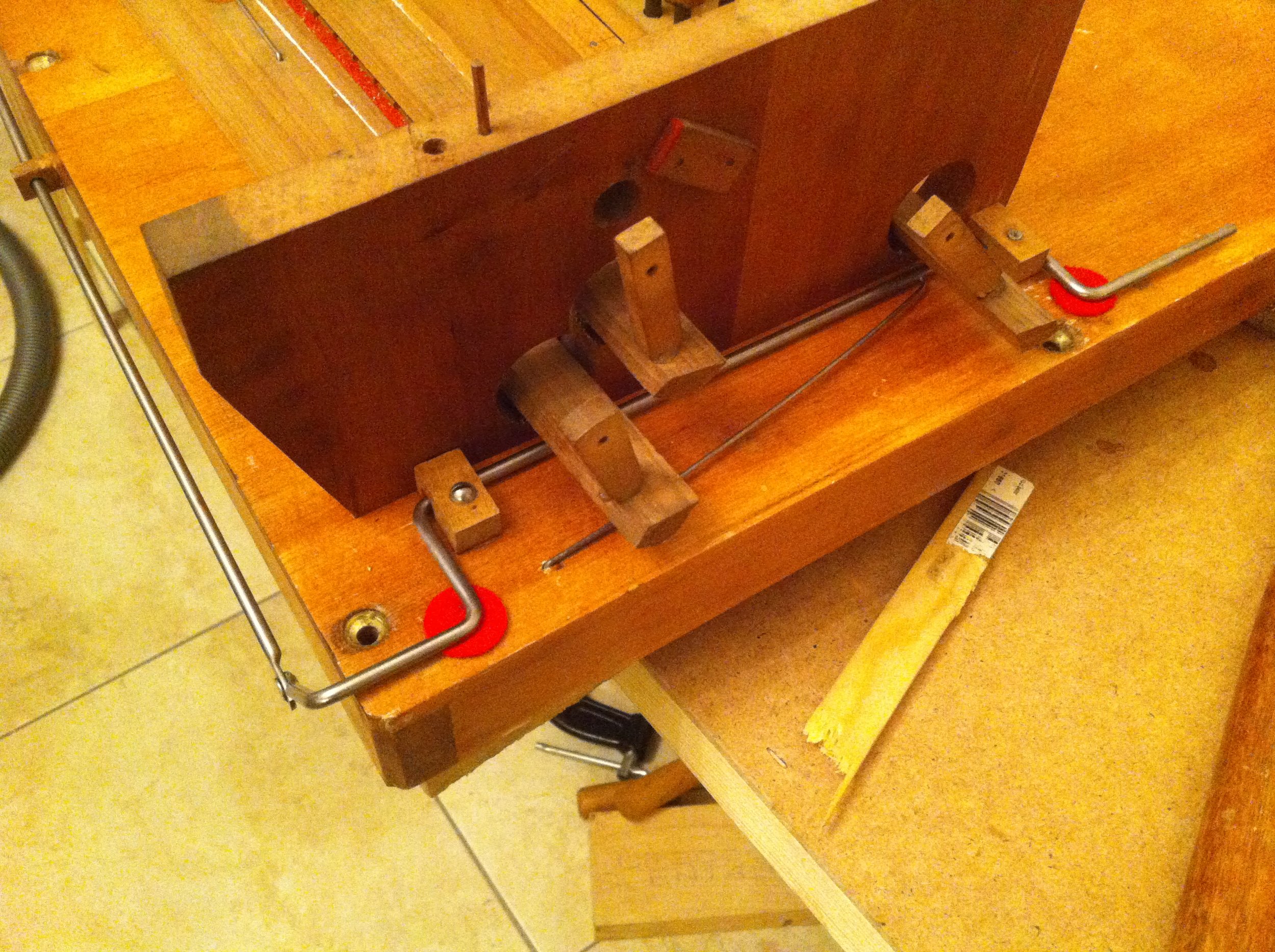

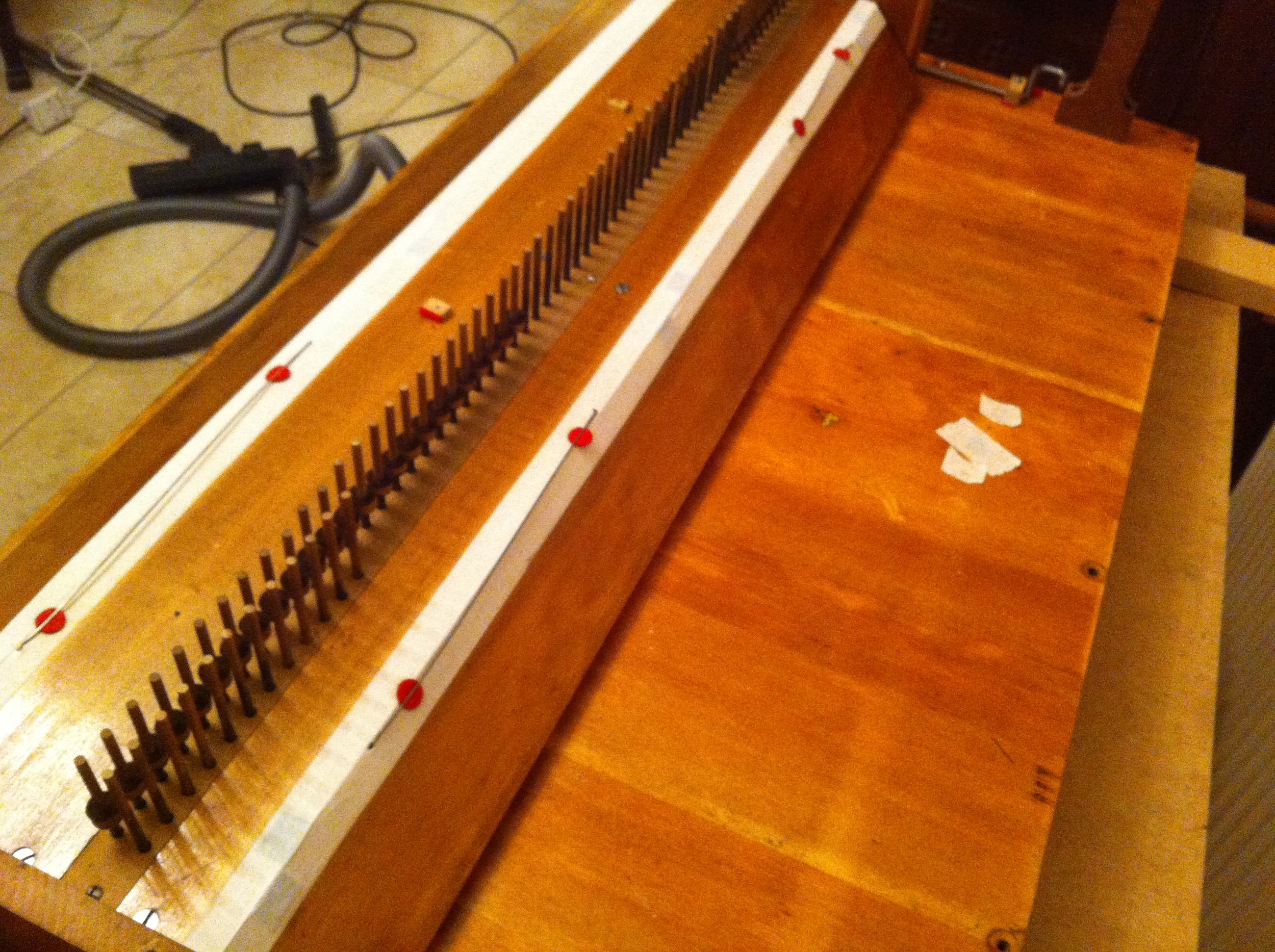

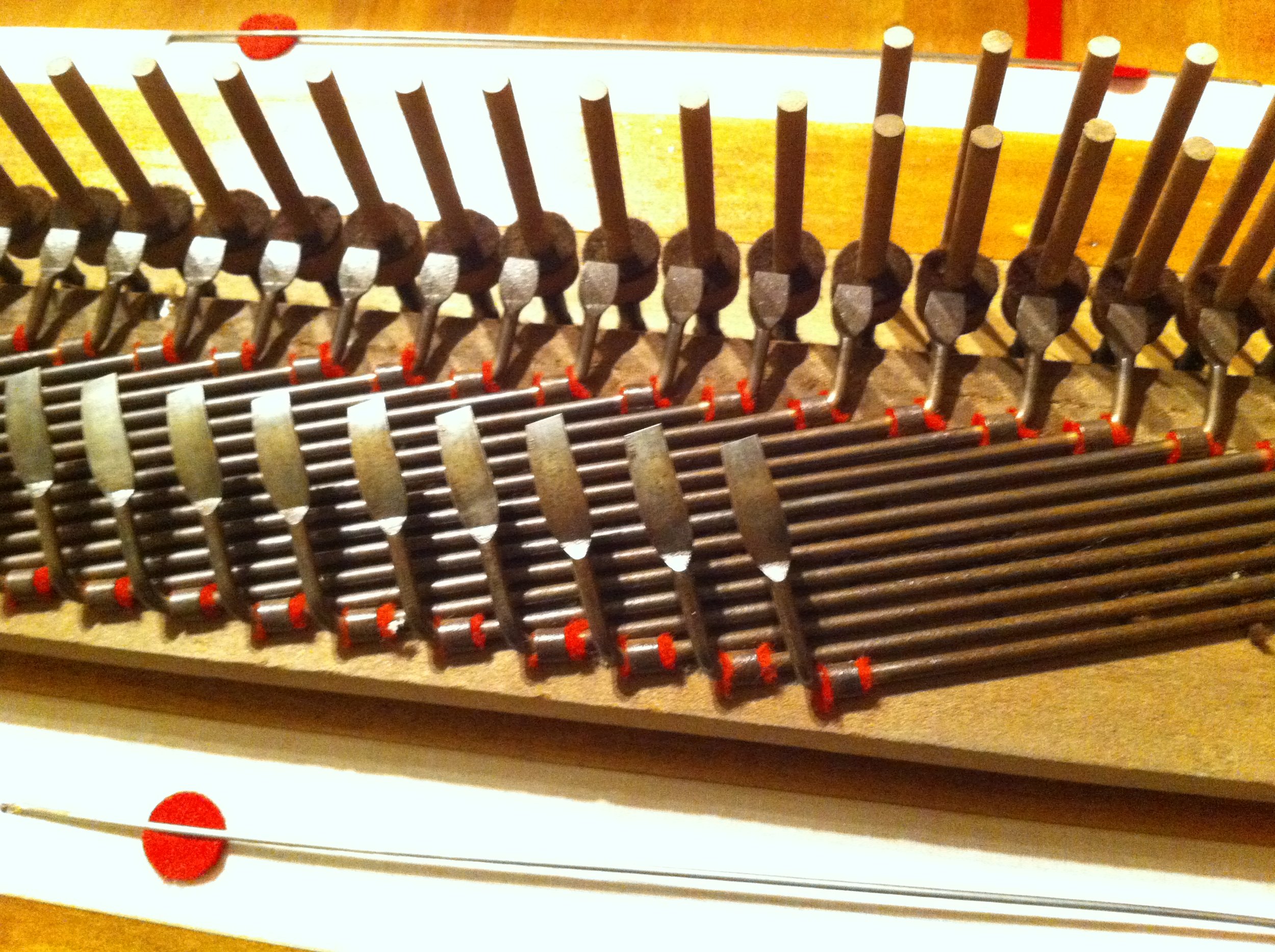




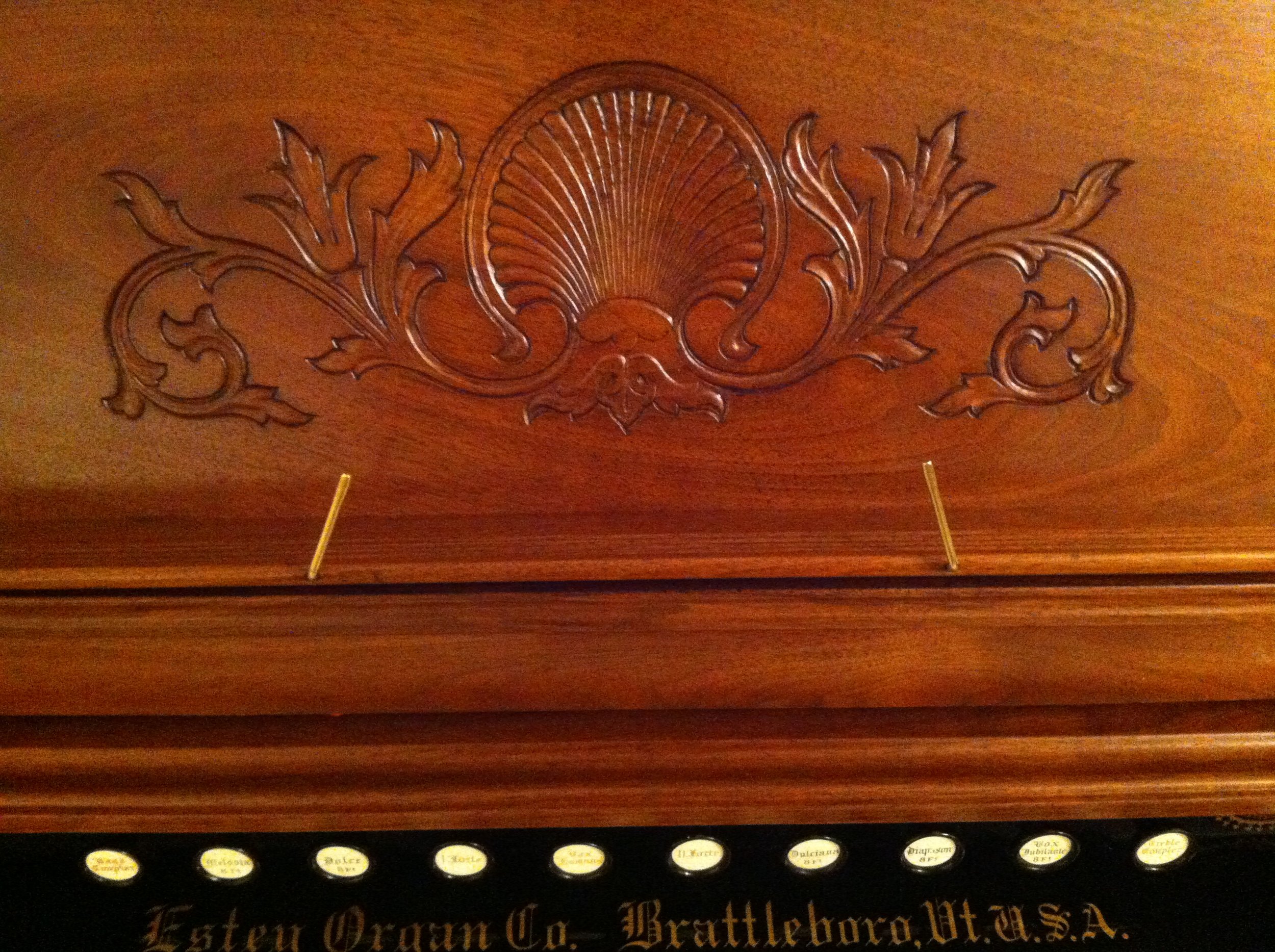

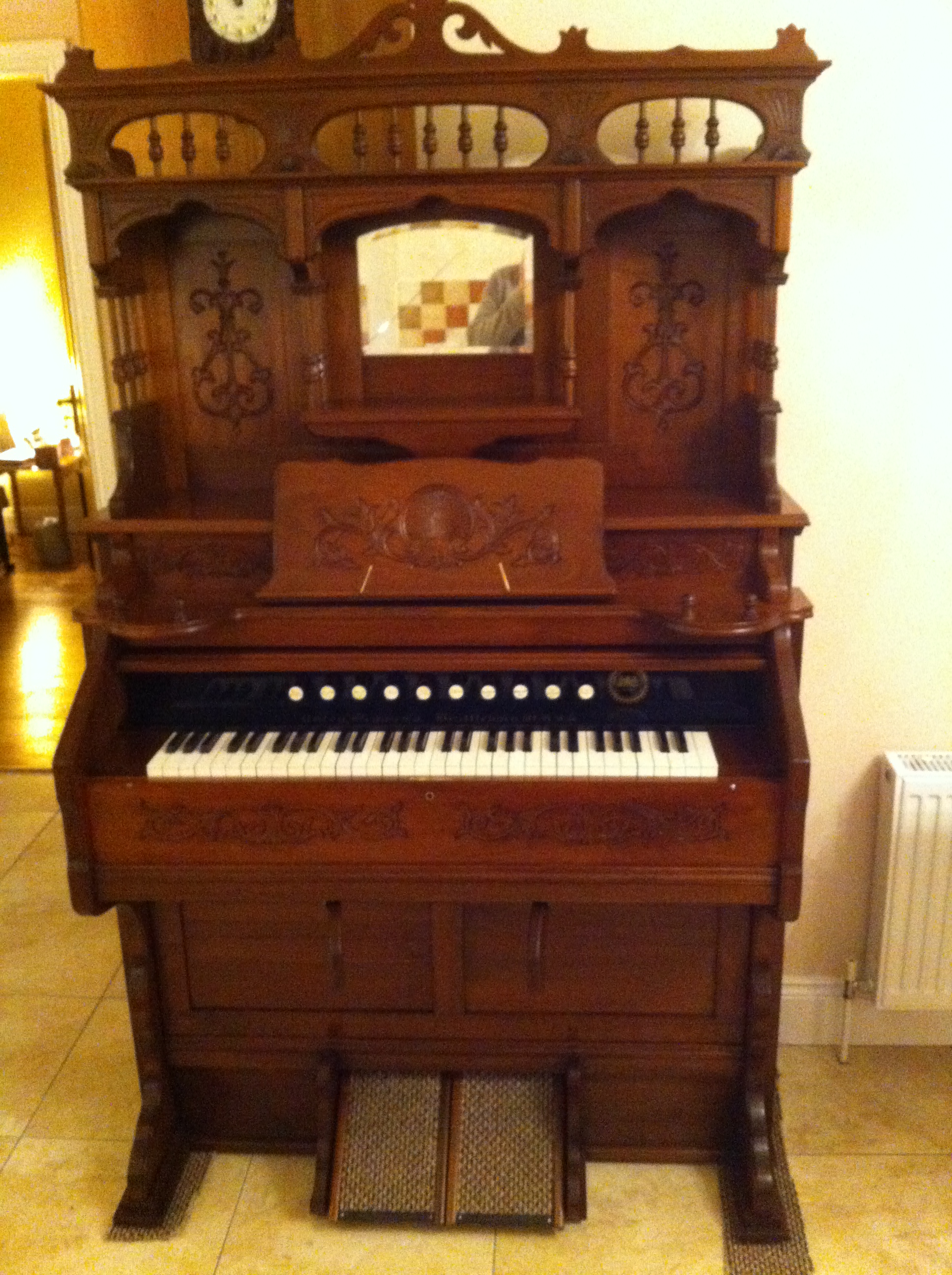

The bellows was replicated using 18mm birch plywood. This is much heavier than the original material but is much stronger. Given that it is so much heavier that the original material I modified the reconstruction slightly to include the use of hinges to help attach the middle board to the top part of the bellows since it also carries the full weight of the exhauster panels. This works well even though not true to the original construction. I used bellows cloth I obtained from Johnson Music Center in Mount Airy North Carolina. I have had it for a few years and was glad to get to use it. I like working with this material.

